Music is the universal language
“Glory to God in the highest heaven, and on earth peace to those on whom his favor rests.” - Luke 2:14
Norse Guitar Feeds
A Guide to Shrapnel Shred
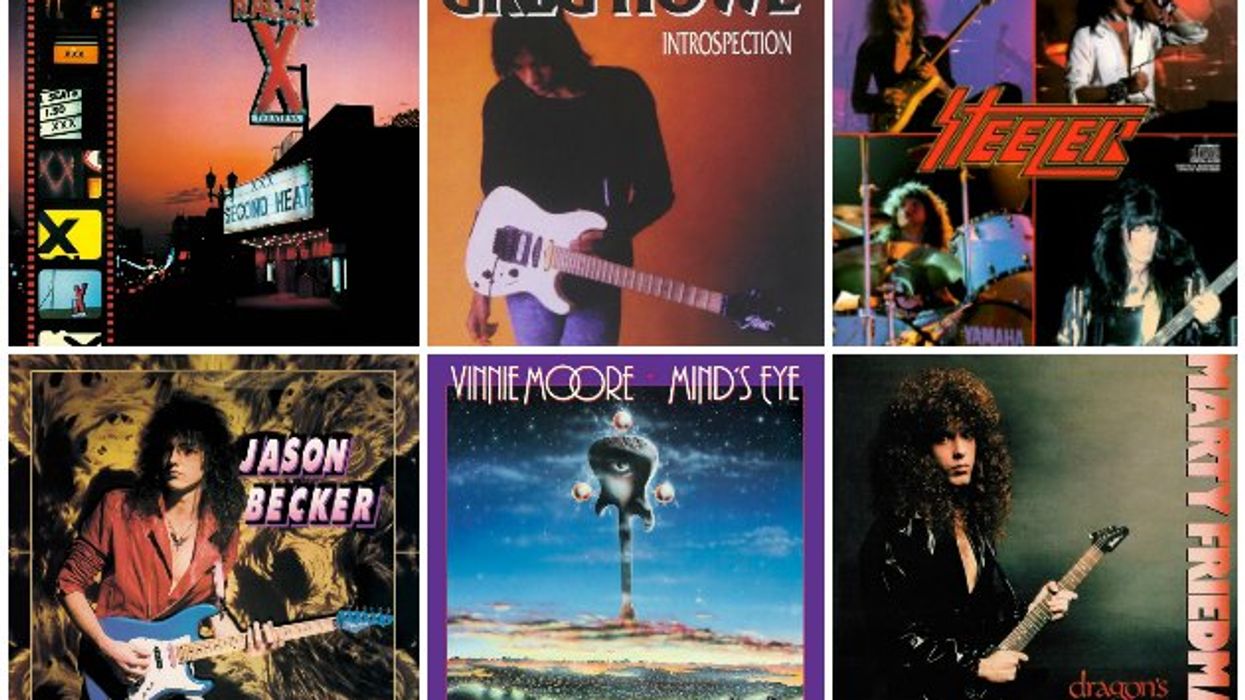
Chops: Advanced
Theory: Intermediate
Lesson Overview:
• Work through sweep arpeggios in the style of Jason Becker.
• Add more chromatic notes to your improvised solos.
• Make your riffs more compelling with unexpected rhythmic subdivisions.
Click here to download a printable PDF of this lesson's notation.
Shrapnel Records introduced the world to some of the most virtuosic rock and metal guitarists to have ever plugged into a high-gain amp. Starting in the ’80s, an era that has subsequently become infamous for guitar gods, Shrapnel’s founder Mike Varney carefully selected the cream-of-the-crop players for his unique record label.
Some Shrapnel alumni are best known for sweep picking, others for insane alternate picking, and yet others for emphasizing legato fretwork. But all of them are known for playing a lot of notes in a very musical way. What made many of these players great, in my opinion, is that each took a unique approach to playing and writing within the fairly specific “shred” genre.
Want to acquire some tricks of their trade? Let’s take a look at key ideas and techniques used by several of Shrapnel’s heaviest hitters.
Most people associate Shrapnel guitarists with technical lead playing, but before we go there let’s first visit the often-overlooked art of playing rhythm. In my opinion, Paul Gilbert and Bruce Bouillet of Racer X were absolute masters of creating rhythmically exciting and unexpected metal riffs. These were often based on strong rhythmic hooks that included subdivisions and interwoven exchanges, and took surprising aural twists and turns.
Ex. 1 is a Racer X-style riff in A minor that illustrates the basic idea of taking one rhythmic pattern and throwing in surprise subdivisions. This riff’s main rhythmic pattern is based on three-note groupings of 16th-notes. In the first measure we encounter a new subdivision on beat 4. Hear how those 32nd-notes surprise the ear? It’s a great example of what Racer X was known for.
Another example of this effect is in the riff’s second fill. We have a 16th-note triplet run to wrap up the first repetition (starting on the “and” of beat 3 in measure 2), and again, the change in subdivision from the main 16th-note pattern creates an additional rhythmic twist.
Click here for Ex. 1
Now that we’ve had a dose of rhythmic content, let’s shift over to the kind of lead playing that makes many listeners’ jaws drop. Because he introduced pop and R&B-inspired chord changes and funky rhythms to what was fundamentally a hard rock and metal label, Greg Howe is arguably one of the most distinctive Shrapnel artists. To make things even more interesting, he favored an innovative tapping technique and infused his playing with chromatics.
Inspired by the record Introspection, Ex. 2 is a Greg Howe-style lick over a series of dominant 7 chords. Hear how the chromatics are interwoven between E7 and B7 chord tones on the weak parts of the beat? This is a common jazz guitar technique, but it’s made very Howe-ish thanks to Greg’s grooves, feel, and note choices.
Next over A7 comes one of Greg’s most famous tapping techniques. This line also demonstrates his “hammer-on from nowhere” technique, which means that the hammer-on note isn’t approached by a previously picked note. Finally, we have another of Greg’s famous tapping techniques over the F#7. Here, we take three-note-per-string scales and instead of picking every note or playing full-on legato, use a hammer-hammer-tap pattern to cover the ascending phrase.
Click here for Ex. 2
Another Shrapnel powerhouse is Tony MacAlpine, who is famously known for his blazing picking and his blend of classically inspired themes and contemporary instrumental music. Ex. 3 pays tribute to his approach to arpeggios.
The opening phrase is one of my favorite Tony-isms. We’re creating a major 7 arpeggio, in this case Dmaj7, by only using the lowest two strings. Keep in mind that there’s absolutely no picking here—it’s strictly legato and tapping. But the real interesting thing about this kind of line is the context in which Tony often uses it. Here, we’re in a Bm tonality, so we can use a D major arpeggio (Bm’s relative major) and still stay in the key.
Click here for Ex. 3
We’ve explored a variety of tapping and arpeggio ideas, but haven’t yet encountered one of the most common staples of the Shrapnel guys: alternate picking licks! Many of the Shrapnel guitarists are well known for playing long, scalar runs in which they pick each note. If used wisely, this can be one of the simplest ways to enhance your playing, as these runs are mostly pattern-based and primarily built on the three-note-per-string scale fingerings.
A simple alternate-picked line in B minor, Ex. 4 starts with a six-note scale shape that’s copied across three octaves. You’ll find this fragment (the first three beats of the first measure) on many Shrapnel albums. Keep in mind that strict alternate picking is crucial for the accuracy and cleanliness of a lick like this, so be sure to practice it slowly.
Because these lines work so well in the three-note-per-string fingerings, they’re often conducive to some sort of triplet subdivision. The kicker with such licks is that they’re very pattern-based and can end up sounding too much like an exercise. Use them wisely and musically.
Click here for Ex. 4
And last but not least, what would a column on Shrapnel be without a mention of the legendary Jason Becker? For dedicated shredders, his playing and spirit need no introduction, but if you need one, check out this trailer for the excellent documentary Not Dead Yet.
Ex. 5 is a workout in Becker-style sweep arpeggios. One point that was unique about Jason’s particular approach to sweep picking is that he extended certain arpeggio shapes further than other players did. In this example, all of the shapes extend down to include two notes on the 5th string. It’s fairly rare to see the Bm and E shapes extend down that far, but that’s part of Jason’s nuanced magic. The key to successfully playing sweep arpeggios lies in the picking pattern. It’s always a specific, non open-ended pattern that isn’t as simple as just constant downstrokes and upstrokes. A hammer-on or pull-off is included every time there’s two notes played on the same string.
Click here for Ex. 5
Keep in mind that playing anything cleanly and accurately lies in practicing very slowly, in time with a metronome. These guys were all masters of fast playing, but I believe they were standouts because they used their chops in clever and musical ways, and that composition was their first priority. So when you’re sitting down with your metronome to blaze through these licks, just remember that music comes ahead of technique.
Racer X
This blazing live performance of Racer X’s “Scarified” from 1988 illustrates how Paul Gilbert and Bruce Bouillet varied the rhythms within their warp-speed riffs.
Greg Howe
Greg Howe improvises an incredible solo over his tune “Come and Get It.” Check out 0:45-0:48 for a great example of one of his signature tapping techniques.
Tony MacAlpine
Here’s Tony MacAlpine playing “Pyrokinesis” with an excellent view of his fretboard. Marco Minnemann plays the drums on this track and MacAlpine plays everything else. Look for his tapped arpeggios sequences and notice how he weaves them into both the melody and the solo.
Jason Becker
The legendary Jason Becker performs a dazzling mix of feisty, extended-range arpeggios in this clip from a guitar clinic in 1989.
IK Releases Brown Sound 82/84
Kiesel Unveils Kyber Headless and Masvidalien MIII Models
Kiesel Guitars has introduced the two newest models in the company’s iconic line of custom-built instruments: the Kyber Headless and Masvidalien MIII now join the lineup of Kiesel’s premium US-made instruments.

Designed to excel in a variety of musical styles, the versatile Kyber Headless is available in 6, 7, and 8-string configurations, standard or multiscale. Key features include:
- 7 different body woods for customization
- 25.5” scale length, 15 different fretboard woods for customization, 24 frets
- Over 100 different pickup configurations
- Kiesel-Designed locking nut, headpiece for hanging, optional body scoops
The Masvidalien MIII is the debut Kiesel signature model from Paul Masvidal, guitarist and composer known for his work with Cynic, Death, Æon Spoke, and Mythical Human Vessel.
Built in Kiesel's California factory, the MIII was designed with strength, resonance, and playability at its core. Inspired by Kiesel's Kyber model, which Masvidal was already connected to, the MIII began as a natural extension of that instrument but quickly evolved into something uniquely its own, a hybrid guitar that expands on the Kyber's spirit and opens new creative ground.

Key features include:
- Woods: 5A Poplar top with a Swamp Ash body, Buckeye top with a Roasted Swamp Ash body
- 25.5”-26.5”, Fretboard woods: Ebony, Richlite Diamond, Roasted Maple, Royal Ebony, and Roasted Birdseye Maple, 24 Fret
- The brand-new Focus pickup, a humbucker made from two blade-style single coils that offers tighter and more precise tones
- The Hybrid carbon fiber/wood neck, the Barbury Castle Crop Circle inlay, Headpiece for hanging,
Like other Kiesel models, the new Kyber Headless and Masvidalien MIII are available in a wide range of options for unique customization. Players can select their favorite finish, tonewoods, electronics and hardware to create the guitar of their dreams…expertly crafted in Kiesel’s Southern California custom shop.
Kiesel’s new Kyber Headless is available for street pricing starting at $1,599. The new Masvidalien MIII is available for street pricing starting at $3,199. For more information visit kieselguitars.com.
Steve Morse Band Announces Brand-New Studio Album
The Steve Morse Band has announced details of their brand-new album, Triangulation, which will be released on November 14 via Music Theories Recordings (Yngwie Malmsteen, Ayreon, Paul Gilbert, Vandenberg). To celebrate, they have unveiled the official video for their new track, “Break Through.”
“Break Through” is the first new music since the release of 2009's Out Standing In Their Field. Talking about the track, Steve Morse shares, "This may start with a guitar riff, but the bass carries the melody. It's just a great feel to play over, and a positive vibe to start the album."
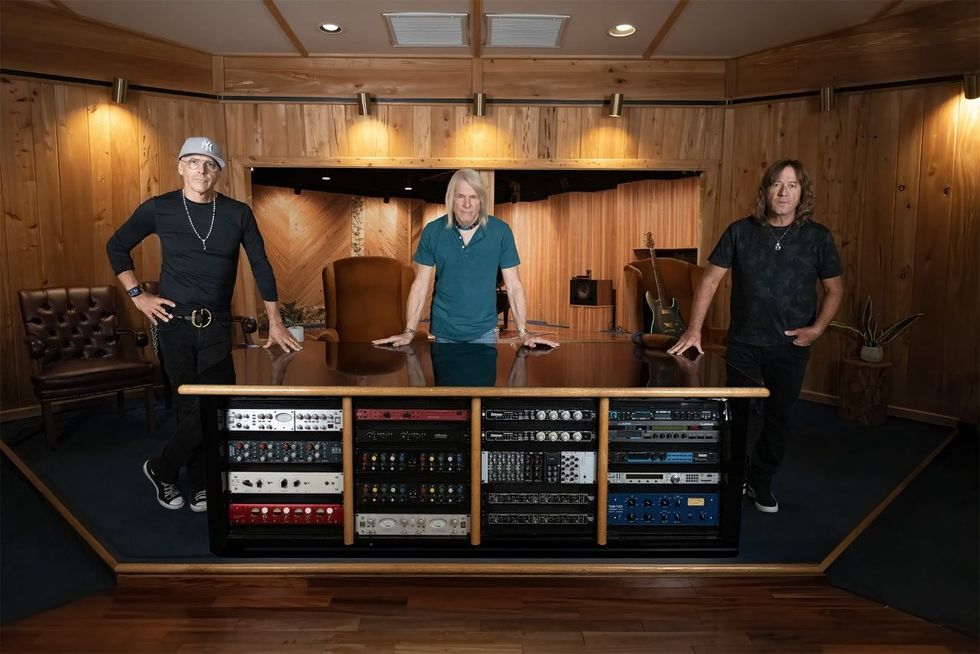
Whenever we think of the greatest guitar players of all time, Steve Morse is a name that's always in the conversation. This album sees Morse teaming up once again with Dixie Dregs, Steve Morse Band, and Flying Colors bassist Dave LaRue, with Van Romaine [Steve Morse Band/Enrique Iglesias] joining on drums.
Steve beams, "Dave and Van have been the bedrock of this trio, and this recording shows why. These guys are unique and incredible musicians on their own, and together, our chemistry is magical. While making the album, we played together, working through parts, riffing off each other, and collaborating on arrangements. I'd bring an idea, and hear it instantly — and then hear it improved. We made this album together, and you can hear it."
There are also some stellar guest features, from Eric Johnson's majestic contributions to “TexUS” and John Petrucci bringing his inimitable progressive metal thunder and, of course, Kevin Morse joining his father on "Taken by an Angel.".
Executive producer Bill Evans noted, “The compositions are among Steve’s best. And audiences can finally hear every detail of Van and Dave’s performance…the band’s collaborative musicality.” Steve added, “Brian captured me brilliantly, and Carl Roa created more sonic and performance clarity than we’ve ever had.”
Morse started his career in the mid-1970s, playing mind-melting jazz-rock with The Dixie Dregs, which earned him multiple Grammy nominations in the process. The following decade, he formed the Steve Morse Band, grabbing an additional Grammy nod, and joined arena heavyweights Kansas, before being recruited by rock and roll originals Deep Purple in 1994. And despite being in one of the world's biggest bands, he continued to innovate in other projects like Living Loud, Angelfire, and Flying Colors – as well as guitar supergroup G3 – showing the world just how much versatility there was in those magic fingers. He announced his departure from Deep Purple in 2022, choosing to care for his wife, who passed away in 2024, by that point having become their longest-serving guitarist.
Naturally, the last few years have been the most personally traumatic of his life, which is perhaps why this year's creative comeback with the new Steve Morse Band album Triangulation embodies the spirit of a master returning to do what he does best. Its nine tracks are a thrilling ride through the mind of a musician who seemingly knows no bounds, crossing over into a cornucopia of sounds and styles from funk and blues to classical and metal.
“The album title Triangulation comes from the concept of aviators, navigators, and sailors looking at two points to pinpoint their exact location at a specific moment in time,” says Steve. It's a geographical concept that also applies to human life on a broader level, and given the journey Morse has been on in recent years, it's only natural that he's been on a path of self-discovery and reflection.
Perhaps the most poignant of the nine tracks is "Taken By An Angel" – a tribute to Steve's beloved wife Janine. Steve left the music world behind to care for her, remaining by her side until her final days. "That song is new territory for me," explains Morse. "It was put together for my late wife's memorial service, with my son Kevin playing along. It brought tears to many folks' eyes because Janine was a huge part of my life and career. People knew her from the Steve Morse Band tours. She was the smiling face opening CDs for me to sign, selling t-shirts, listening to people's stories in the crowd, and taking photos for VIP visits."
After all the heartache and anguish of the last few years, you can't help but feel grateful Morse is once again ready to share his creative genius with the world around him. Given his stature among the guitar community – often lauded as 'your hero's hero' in the same way people spoke about Jeff Beck – his creative return marks a new phase of inspiration and brilliance. In that sense, you can tell the release of this record means a lot to him.
The band hits the road in October bringing the new repertoire to the stage. Steve Morse shares, “Every generation or so, we put out a new album, and the time is now! We'll be doing new material on stage, and have enlisted a special guest, Angel Vivaldi, to allow us to better perform some of the layered tunes in concert. Excited to have a bigger sound and new material! See you on tour!” Van Romaine offers, “I am so thrilled for this brand new major Steve Morse Band chapter with new tour dates and an album that was so much fun to record with Steve and Dave LaRue, and a couple special guests. While music is always subjective this Triangulation album is such a gem to me on many levels.”
Upcoming Appearances are:
- 10/09 Louisville, KY Headliner’s
- 10/10 Nashville, TN CMA Theater
- 10/12 Charleston, SC Charleston Music Hall
- 10/13 Atlanta, GA Variety Playhouse
- 10/14 Charlotte, NC The Neighborhood Theatre
- 10/15 Raleigh, NC The Rialto Theatre
- 10/16 Annapolis, MD Rams Head On Stage
- 10/18 Elkton, MD Elkton Music Hall
- 10/19 Lititz, PA Mickey’s Black Box
- 10/20 Red Bank, NJ The Vogel
- 10/21 Sellersville, PA Sellersville Theater
- 10/23 Somerville, MA Somerville Theatre
- 10/25 Cohoes, NY Cohoes Music Hall
- 10/26 Ridgefield, CT Ridgefield Playhouse
IK Releases Brown Sound 82/84
IK Multimedia releases the Brown Sound 82/84 Signature Collection for TONEX, the third and final installment of the limited TONEX Brown Sound series. This collection features 83 carefully crafted Tone Models, including several amp-only captures for use with your favorite IRs or running through a real cab on stage.
As the push for radio-ready hits grew stronger, the Brown Sound became tighter, more refined, and more polished without losing its iconic edge. Users will discover both authentic recreations and thoughtful variations to reflect different theories about how these legendary tracks were recorded.
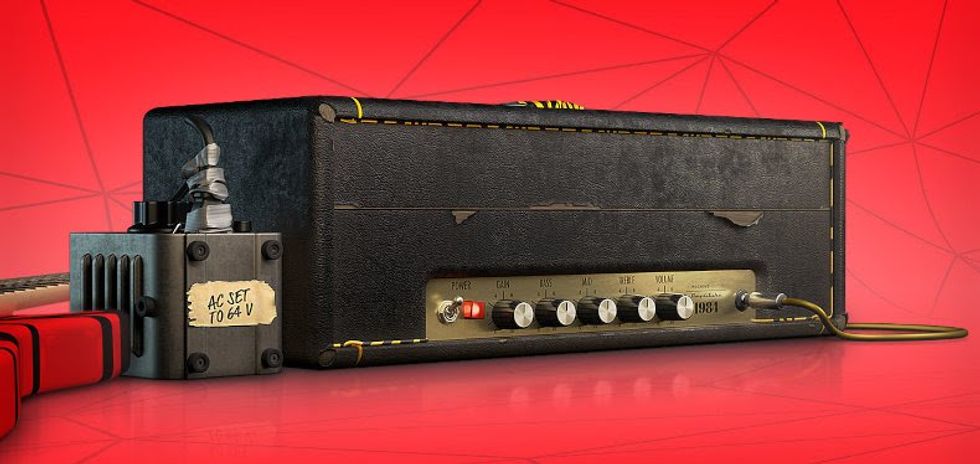
1982 Tone Models
The '82 sessions introduced a brighter, more layered tone while preserving the core character of the previous recordings. The G12-65 speaker remained key to the sound, delivering a tight low end, warm midrange, and a smoother, less spiky high end than the earlier Greenbacks. Recorded in Amigo studios, changes in mic placement and outboard gear added polish and dimension, resulting in a more refined studio sound.
1984 Tone Models
The '84 sessions marked a leap forward in tonal precision and production quality. Tracked and mixed at a newly built studio in Coldwater Canyon, the sound became more controlled and processed, yet still retained the grit and energy of earlier recordings. The suspected use of Telefunken EL34s likely contributed to the added warmth and mid-forward presence, while amp tweaks and precise Variac adjustments gave each track its own tonal identity.
The Amp: "The ONE"
At the heart of the Brown Sound 82/84 collection is "The ONE" - a meticulously crafted Marshall-style amp built from the ground up with the exact same spec as the infamous 1968 Super Lead serial number #12301, including crucial mods that capture the DNA of the early brown sound like no other amp model.
No Tone Unturned
Each Tone Model was built using controllable levers like Variac voltage, cab voicing, mic geometry, and parallel load, with options spanning different voltages, speakers, and pickups to reflect the shift from '82 to '84. All models are level-matched, offered with or without parallel load, and captured raw without post-processing for authentic, period-correct amp tones.
Ready to Play
As with all collections in the series, these Tone Models were crafted using period-correct gear and capture techniques to recreate the final two albums of that era genuinely. Each Tone Model reproduces the recorded album tone in exquisite detail, offering an ideal foundation for adding time-based effects—either within TONEX or through a favorite pedal.
Pricing and Availability
The Brown Sound 82/84 Signature Collection is now available via ToneNET and within any version of TONEX for Mac/PC at $/€99.99.*
- TONEX Brown Sound 78/79 - $/€99.99* - Includes 50 Tone Models.
- TONEX Brown Sound 80/81 - $/€99.99 - Includes 73 Tone Models.
- TONEX Brown Sound 82/84 - $/€99.99 - Includes 83 Tone Models.
- TONEX ONE Brown Sound Limited Edition - $/€249.99 - Available in white, red, or yellow. Includes Brown Sound 78/79 and a choice of one other Brown Sound collection (a $/€199.98 software value). Existing Brown Sound 78/79 users will receive a $/€50 discount at the IK store.
- TONEX Brown Sound Anthology Collector's Limited Edition - $/€599.99 - Shipping now. Box set includes all three colors of TONEX ONE (white, red, and yellow) plus all three Brown Sound Signature Collections (78/79, 80/81, and 82/84). Limited to 200 units worldwide.
*Pricing excluding taxes.
For complete details and information about the Brown Sound Anthology collections and pedals, and to hear the tones, visit:
Find Your Voice
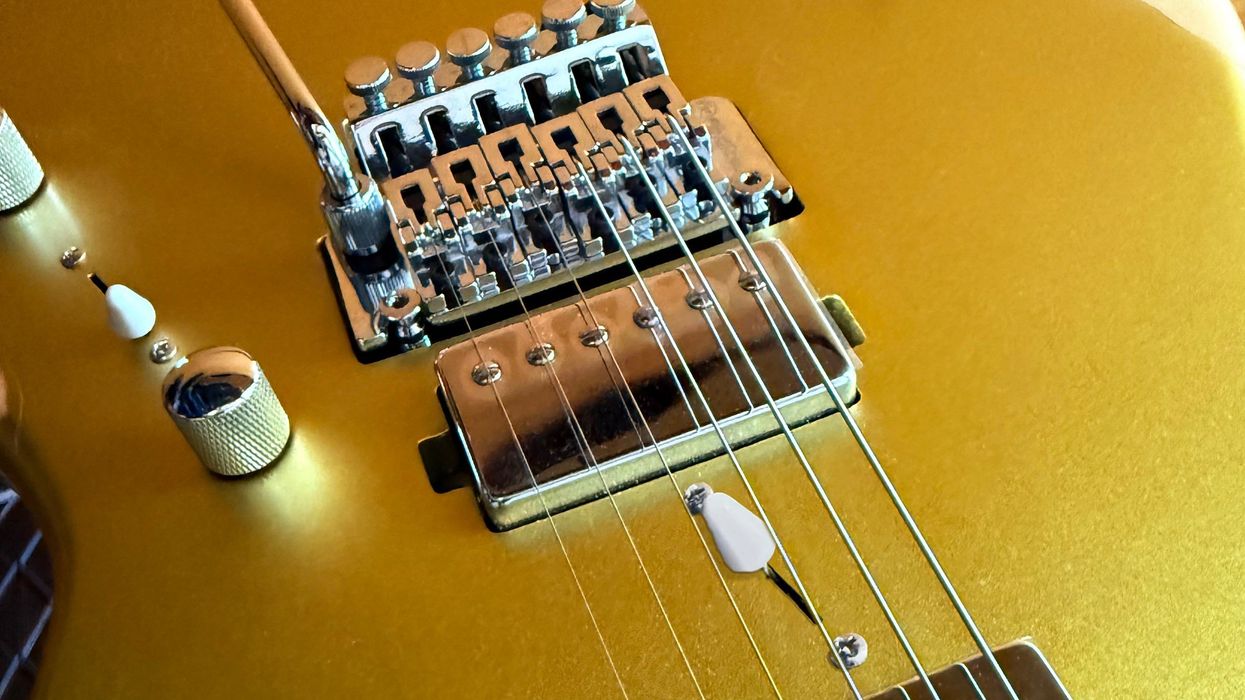
Over the years I’ve often been asked for advice about how to “get into the business” of either the playing or building of guitars. Despite my reluctance to toss anyone into the hellhole pit that is either of these two endeavors, I do my best to help. That isn’t to imply that building guitars or playing music isn’t satisfying—it most certainly can be. In fact, many of us have built fulfilling and profitable careers in both of these trades, not to mention made lifelong friends. What are you hoping for? Is this going to be your job, with hopes that it won’t seem like drudgery? Do you just like to mess around with gear and wonder what it would be like to do it for pay? Like almost everything in life, it’s the managing of expectations that’s at the heart of the matter.
If it’s money you’re after, there are people more qualified to guide you than me. Yes, I’ve managed to scrape together a living while seemingly avoiding the grind of a “normal” job, but it hasn’t been a cake walk. I’d be afraid to add up the hours I’ve spent doing things I would have rather not had to do. I call it the 80/20 rule. You spend 80 percent of your time doing stuff you’d rather not do, and 20 percent doing the things you love—and I’m being generous here. If that seems like a normal job to you, you’d probably be correct. But despite all of that, let’s talk about how to get started anyway.
If you want to follow your muse and cut your own path, approach things like an artist who dropped out of business school. Be prepared to use your truncated education on 80 percent of the work, and let your freak flag fly on the 20 percent that makes you be you. Not everything you create will solve problems and answer questions for your customers and fans, but that’s not the point—at least in the creative part. Don’t worry, your rational self will be waiting down the line to reveal the cold hard truth later.
“Being a creative person is a series of trial-and-error episodes as much as any kind of formal schooling.”
In art critic Jerry Saltz’s book How to Be an Artist, he spells out how to discover your path—a sort of step-by-step guide to making the right kind of “mistakes” that bring you to the place where you know and understand how to be uniquely you. In fact, you might want to stop reading my drivel and go buy his book now. That gets us both off the hook.
Saltz’s process seems very familiar to me. You see, being a creative person is a series of trial-and-error episodes as much as any kind of formal schooling. It’s good to learn the history of your craft—all of it. Learn the way artists look at the world. Try to imagine how the constraints of what has come before benefit and hold us back. You can’t break the rules unless you know them and why they exist. There are conventions that should be questioned, and others that are the bedrock of the game you are playing. Learn how to tell the difference.
Maybe you’ve heard that there are only seven basic story arcs: overcoming the monster, rags to riches, the quest, voyage and return, comedy, tragedy, and rebirth. But we all know that within these themes there are infinite possibilities. That’s your ticket. That’s where your personality and character carve out your unique vision. I like to think of guitars (and songs) as story arcs. There may be only a few archetypes, and almost everyone follows them, but what’s important is the way you tell the story. On a guitar, you shouldn’t just decide to put a toggle switch in the middle of the fretboard because you want to be different, but you can decide to make that switch do something that hasn’t been done. I usually stop at that point and ask the 80 percent dude in me if this will actually help anyone, although I am free to ignore the answer if it helps to tell the story I am telling.
In the end, if you pay attention to what you like, the story you are telling will be a reflection of you. When that story makes sense to your audience, too, you’re in business. And that’s how you make a life as an artist
Jackson’s new Pro Origins 1985 San Dimas series pairs ‘80s metal vibe and aesthetics with modern precision features

Jackson has launched its new Pro Origins 1985 San Dimas series – a selection of guitars which pair the ‘80s metal vibe and aesthetics with modern precision specs.
Aiming to equip metal guitar players with “retro-futuristic” tools, these guitars are loaded with vintage Jackson J90C & J50B pickups, old-school top-mounted double locking Floyd Rose FR1000 tremolo systems, and the legendary original speed neck shape.
There are four distinct models available – all based on the classic San Dimas design – including two single-humbucker and two double-humbucker models.
 Credit: Jackson
Credit: Jackson
All four models sport a resonant alder body for the “perfect balance of warmth and punch, with exceptional sustain and clarity to cut through the mix”.
They also feature Jackson’s sleek super speed neck profile for easy fretting the length of the fretboard, 12”-16” compound radius fingerboards and, as stated, Floyd Rose 1000 tremolo systems for those classic ‘80s divebombs.
The single-pickup Pro Origins 1985 San Dimas SD1A H FR is available in both rosewood- and maple-fingerboard configurations, and while the Pro Origins 1985 Limited Edition San Dimas SD1 HH FR and Pro Origins 1985 San Dimas SD1 HH FR have maple fingerboards.
The Limited Edition model comes with uncovered pickups, while all other models in the range have pickup covers.
“The Pro Origins 1985 San Dimas series leans heavily on nostalgia and authenticity, featuring pickups designed from the old school J90 and J50 recipes that defined the high velocity music of the 80s,” says Jon Romanowski, VP of Product, Jackson.
“We’re offering players that coveted vintage tone and feel, built with modern craftsmanship and reliability features that today’s professionals demand. When you plug into a Pro Origins San Dimas, you’re connecting directly to that golden era of guitar innovation while having the confidence of modern construction and playability standards.”
The Pro Origins 1985 San Dimas series starts at £999. For more information, head to Jackson.
The post Jackson’s new Pro Origins 1985 San Dimas series pairs ‘80s metal vibe and aesthetics with modern precision features appeared first on Guitar.com | All Things Guitar.
System of a Down's Daron Malakian Rig Rundown
The metal giants return to the stage with a show powered by gold-and-black axes and pure tube power.
Except for two new singles in 2020, alt-metal icons System of a Down haven’t released new music in 20 years. But luckily for their fans, System—vocalist Serj Tankian, guitarist/vocalist Daron Malakian, bassist Shavo Odadjian, and drummer John Dolmayan—took their catalog of era-defining, genre-changing hard-rock haymakers on tour this year across South and North America.
PG’s Chris Kies connected with Malakian onstage at Soldier Field in Chicago ahead of System’s second show at the football stadium. Malakian and his tech, Patrick Lachman, explained how some color-coded Gibson, Ibanez, and Friedman gear give Malakian the fire he needs to burn through the band’s legendary set.
Brought to you by D’Addario.
SG With SDs
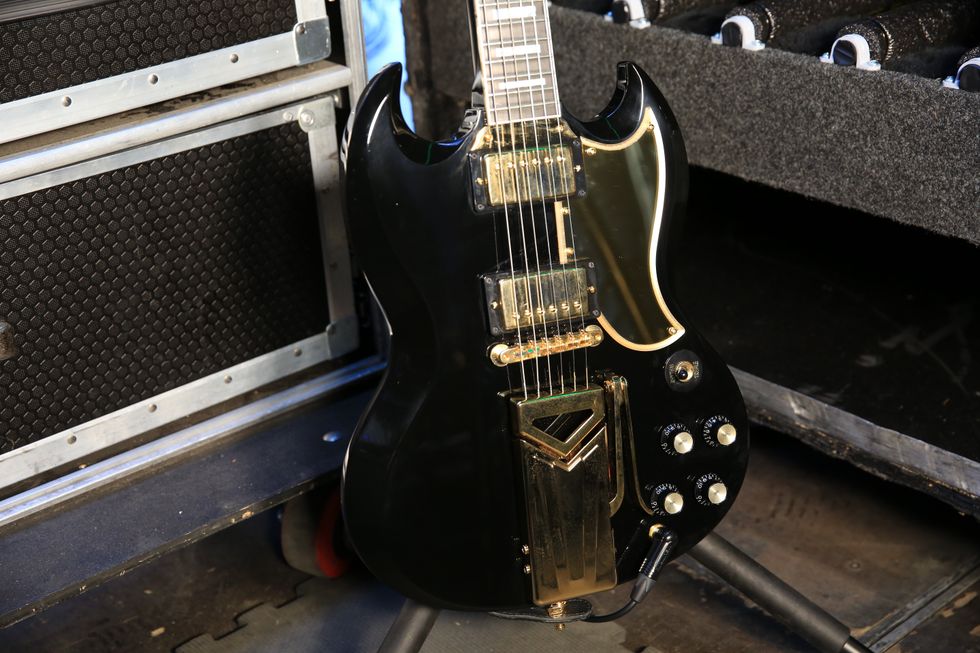
This Gibson SG is brand new and “hot off the presses,” per Malakian’s tech, Lachman. Built in Gibson’s Custom Shop, it’s got Seymour Duncan Custom Shop pickups. On this run, he starts shows on this guitar, and will typically switch things up after about 10 songs.
Malakian plays custom, extra-pointy Dunlop picks, and runs all his axes with a custom set of Ernie Ball strings (.010–0.50). System’s catalog, and therefore Malakian’s guitars, are predominantly in drop-C tuning.
Freeze!
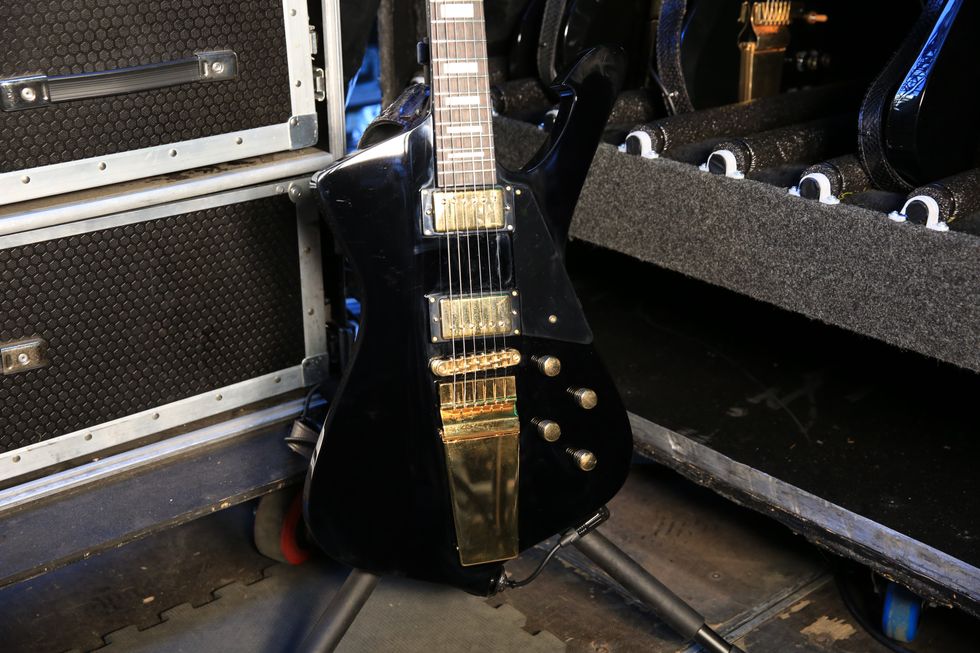
Next up during the set, Malakian will turn to his iconic Ibanez Iceman, one of his most heavily leaned-upon toys during this tour. This one has black “secret ninja binding,” his tech quips, virtually invisible to all but Malakian. It’s wired with Seymour Duncan Custom Shop Pearly Gates pickups.
B.Y.O.V.
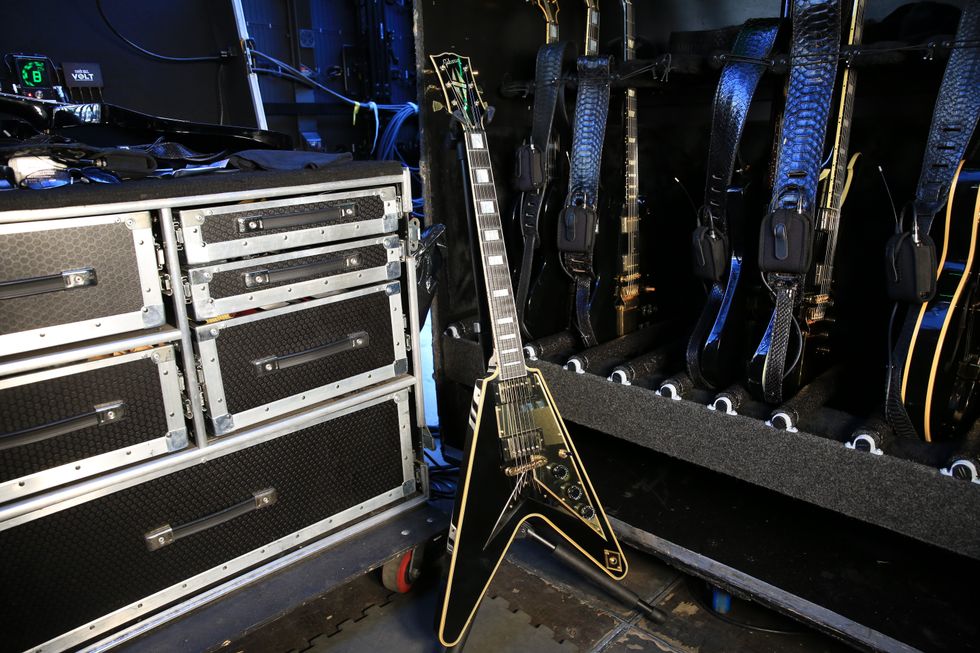
Malakian always liked how Albert King’s Flying V looked with its Les Paul-style headstock, so when Gibson was making him a V, he requested that it be outfitted with the same look. This one’s rocking a pair of Seymour Duncan Saturday Night Special pickups.
Semi-Hollow Star
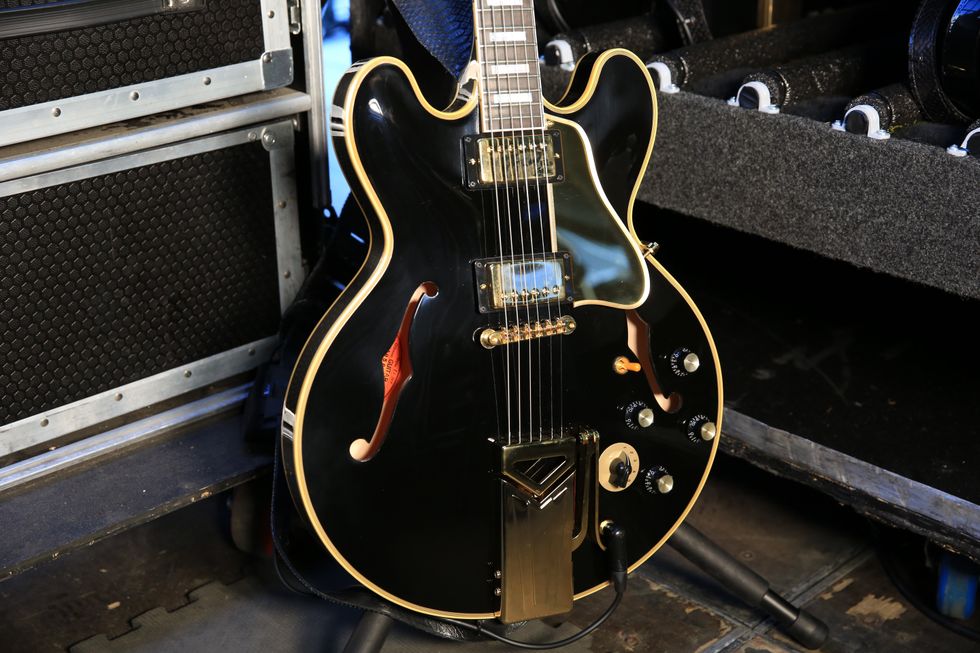
This Gibson ES-335, dressed in the same black-and-gold scheme as all of Malakian’s guitars, also came fresh from the Custom Shop for this run of shows.
Old and New, All Tube
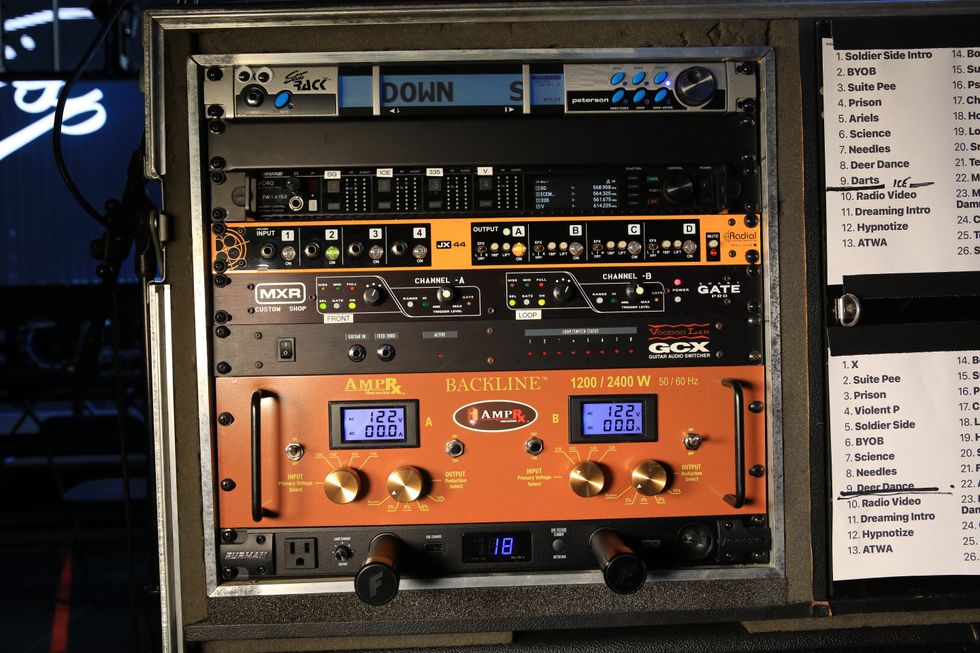
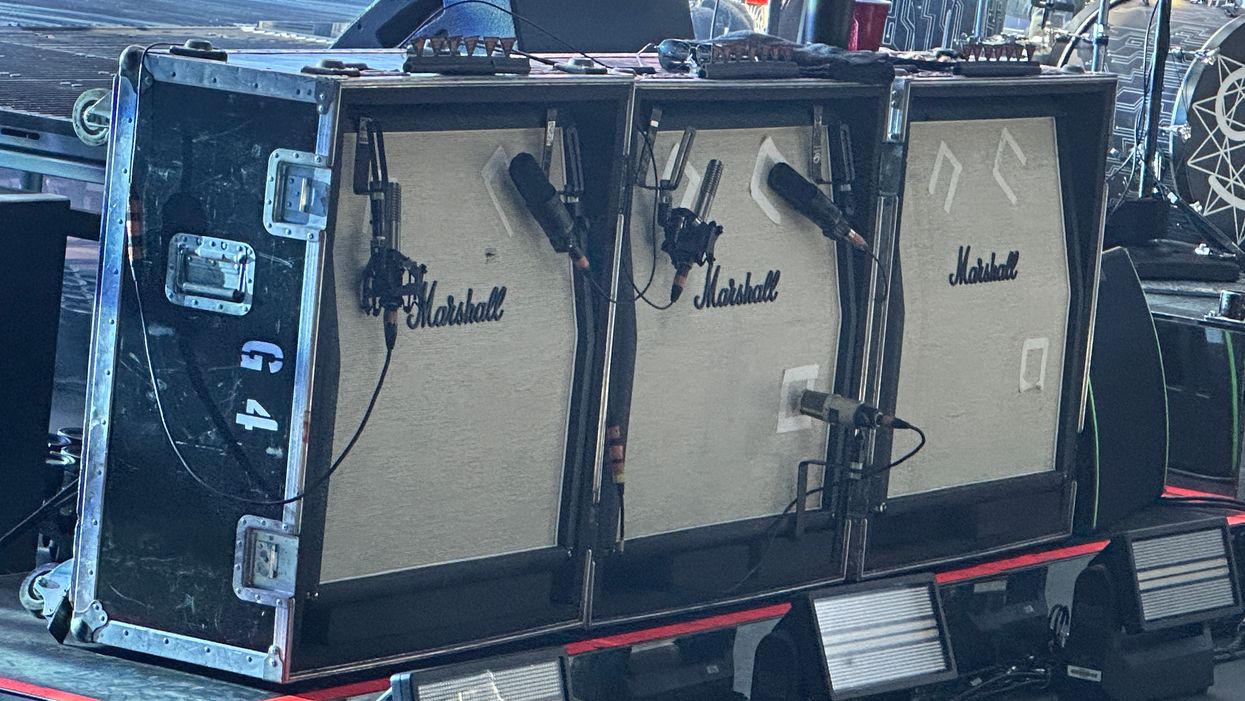
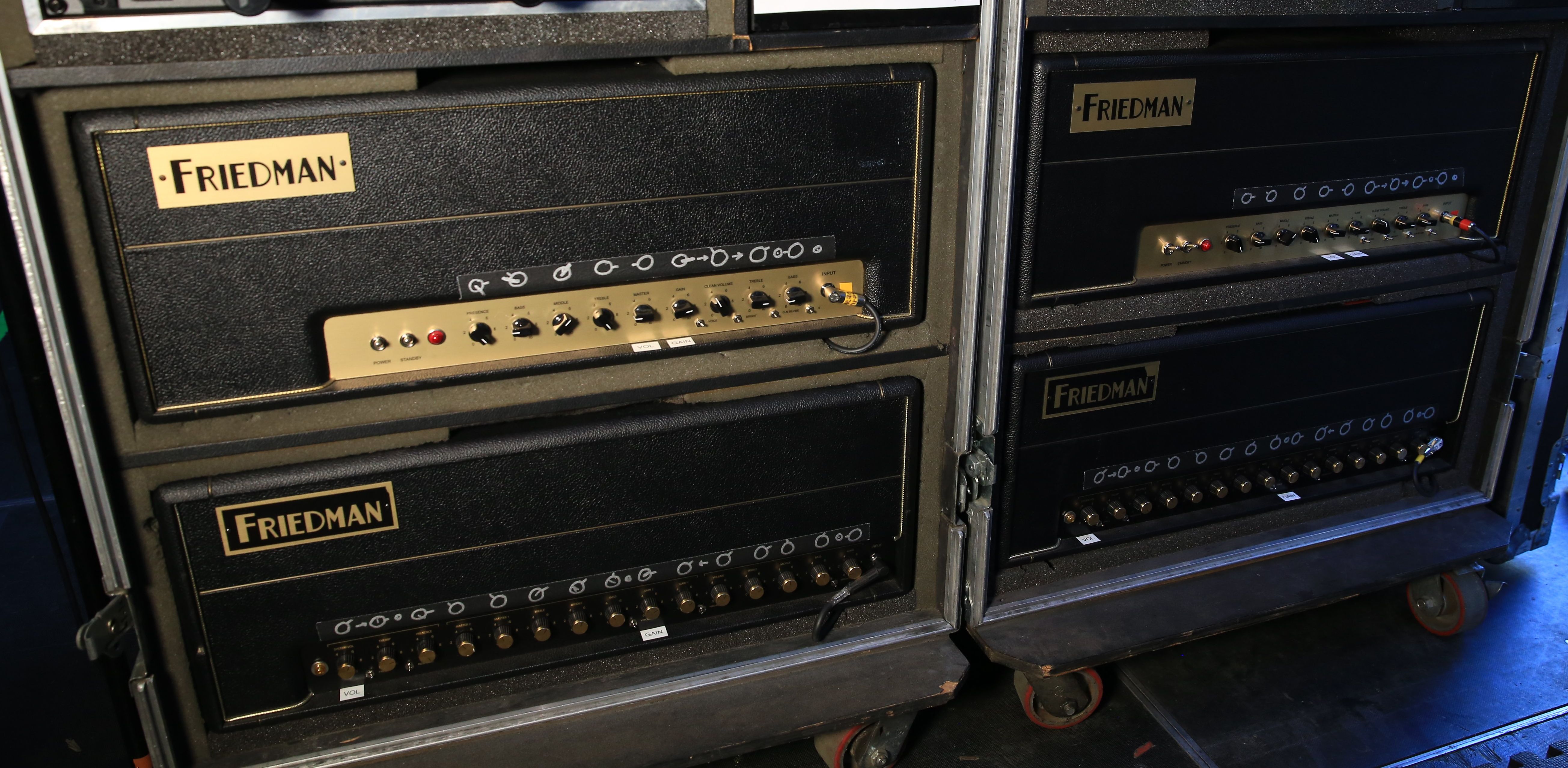
Malakian doesn’t have anything against modeling technology, but he prefers to keep things old-school. He runs two generations of Friedman BE-100 heads at the same time: The newer BE-100 Deluxe head (below) is used for dirty tones, while the first-gen BE-100 (above) stays dialed for cleans. They’re connected to two Marshall 4x12 cabinets onstage, dedicated to either the clean or overdriven signals. The speakers are Celestion G12M-70s.
Loaded onto Malakian’s rack above the amp heads are a Shure AD4Q, Radial JX 44, MXR Smart Gate Pro, Voodoo Lab GCX, AmpRx Backline, and Furman PL-Pro DMC.
Daron Malakian’s Pedalboard
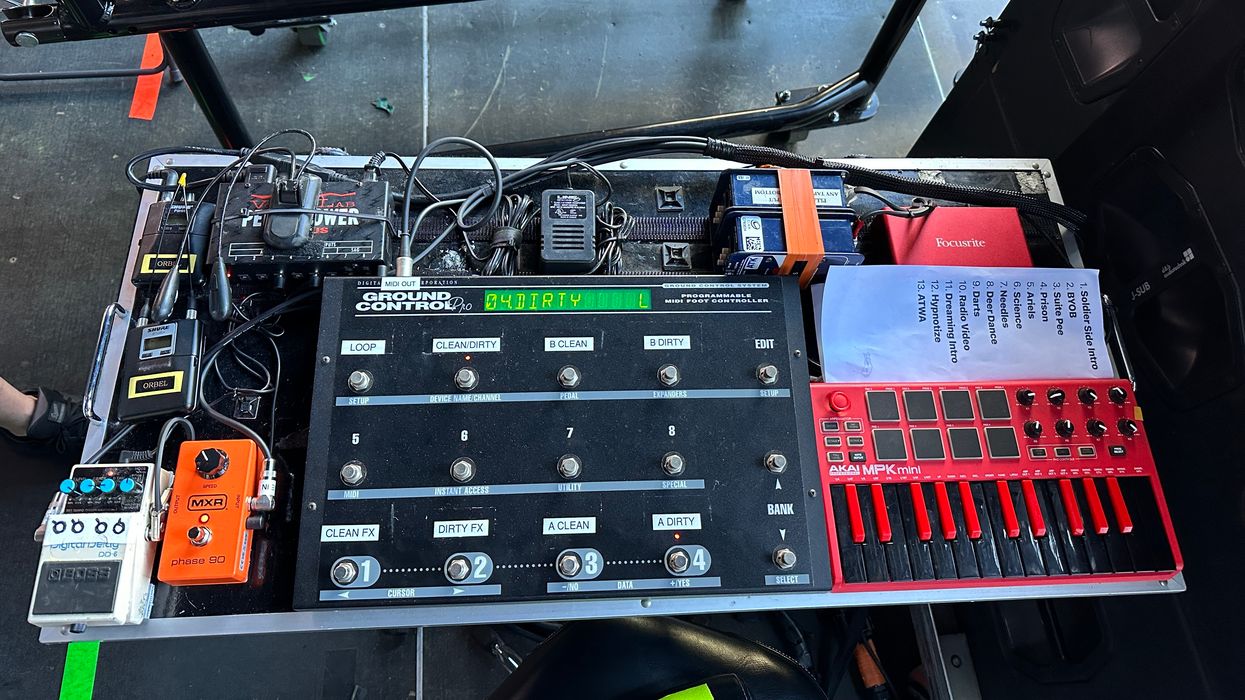
Malakian’s switching is handled backstage by his Scars on Broadway bandmate Orbel Babayan via this board. In addition to a Voodoo Lab Ground Control Pro switcher, Akai MPK Mini, and Scarlett Focusrite interface, the board is dead simple, with just an MXR Phase 90 and Boss DD-6 delay. No dirt pedals needed; all Malakian’s drive comes from the Friedman. A Voodoo Lab Pedal Power 2 Plus fires up the affair.

Ernie Ball Custom Set (.010-0.50)
Gretsch guitar given away by Jimmy Page for an NME competition sells for £100,000 at auction – over 3x its estimate

You might remember hearing in July about the Jimmy Page-owned 1957 Gretsch Chet Atkins 6120 that was headed to the auction block.
As the story goes, the guitar – bought by Page in Nashville in 1972 for £200 – was given away by the Led Zeppelin legend as part of a 1974 competition hosted by our sister title NME.
The competition – titled ‘Win Jimmy Page’s Own Guitar’ – featured the electric guitar as a prize, and that magazine edition featured a photo of Page holding the instrument like a cricket bat.
After passing through the hands of several owners since leaving Jimmy Page’s following that competition, news broke in July that the guitar was heading for auction via Corsham, England-based auctioneer Gardiner Houlgate.
While experts predicted it would sell for somewhere between £30,000 and £50,000, the guitar has smashed that figure, selling yesterday (9 September) for a princely £100,000 (approx. $135,536).
 Credit: Gardiner Houlgate
Credit: Gardiner Houlgate
Gardiner Houlgate auctioneer Luke Hobbs says the sale was a “fantastic result that exceeded all expectations”, and that the guitar “fiercely contested by collectors worldwide, with bids coming in via both telephone and internet”.
“It was a true privilege to offer an ex-Jimmy Page guitar,” Hobbs continues. “Of all the artist-associated instruments I’ve been involved with, this has been my favorite journey, both for the remarkable story behind it and the rarity of the artist. Above all, I am delighted for the family.”
The winner of the 1974 NME competition was Charles Reid of Hornsey, north London. At the time, Reid was quoted as saying, “Page must be mental giving away such a terrific guitar as this. It’s the kind of instrument that every guitar player dreams of owning but can never really afford.”
After owning the Gretsch for over 15 years, Reid sold it to Phil O’Donoghue of Chessington, Surrey in 1990 for £2,000. The guitar remained with O’Donoghue until his death earlier this year, and the latest Gardiner Houlgate auction is the result of it being sold by his family.
Also part of that auction was a Burns Double Six 12-string guitar “borrowed” by Mark Knopfler for 50 years and used on classic Dire Straits album Communiqué, which accurately sold for its estimate at £30,000.
 Credit: Gardiner Houlgate
Credit: Gardiner Houlgate
Learn more about the sale at Gardiner Houlgate.
The post Gretsch guitar given away by Jimmy Page for an NME competition sells for £100,000 at auction – over 3x its estimate appeared first on Guitar.com | All Things Guitar.
Reverb UK relaunches with lower seller fees and smarter selling features

Reverb has announced the relaunch of Reverb UK, complete with lower selling fees and new tools for sellers.
Sellers will now pay a flat, “all-in” 5% fee on every sale – down 3% from before. For the hundreds of UK-based music shops and thousands of individual musicians who rely on Reverb, that drop means more money back in their pockets.
- READ MORE: Reverb has been sold by Etsy, and is now an independent company for the first time since 2019
To sweeten the deal, Reverb UK has added discounted postage labels via DPD, Yodel, and Evri, as well as UK-specific market trend data that sellers can use to price their gear more accurately. The changes are designed to make it easier for users to get their gear into the hands of musicians throughout the UK and beyond, using a marketplace built by musicians for musicians.
 Credit: Reverb
Credit: Reverb
BRIT Award-winning producer Mark Ronson, who used the site during the making of Barbie, explained just how pivotal Reverb can be in an Industry Insights talk at NAMM last year: “We were working on the score for Barbie, and we realised that director Greta Gerwig was in love with the sound of ‘70s and ‘80s analogue synthesisers. I looked on Reverb for a Yamaha CS-80, and I saw that there was one about an hour and a half away, so we drove out to get it and its sound became a key part of the movie’s soundtrack.”
Since launching in 2016, Reverb UK has become a go-to hub for musicians of every stripe, from hobbyists to headline acts like Duran Duran and Placebo. The platform has hosted everything from everyday pedals to rare treasures like the console used by The Beatles to record Abbey Road.
“Since 2016, Reverb has played a key role in the UK’s music-making community by connecting musicians with music gear they love,” says Reverb COO Tiffany Miller.
“Whether you’re parting with a vintage Telecaster or looking for unique pedals that can reshape your sound, our straightforward fees and key product improvements make selling music gear more rewarding than ever before, giving musicians more time to focus on what really matters: making music.”
Learn more at Reverb UK.
The post Reverb UK relaunches with lower seller fees and smarter selling features appeared first on Guitar.com | All Things Guitar.
How to Play the Challenging and Rewarding Flatpicked Fiddle Tune ‘Daley’s Reel’
The “groundbreaking” prog band that Stewart Copeland thought were “crap” at the time: “I never would have guessed from having seen them live”

Stewart Copeland has looked back on his early days encountering prog bands – and confessed that first impressions can sometimes be deceiving.
In a recent interview with Classic Rock, the former Police drummer shares a surprising revelation about one of the bands he encountered on the road: “Yes I do [still listen to a bit of prog]. A good example would be Hawkwind,” he says.
“Back in the seventies I roadied for a band that supported them, and they were crap. Decades later I realise that they were actually a groundbreaking, interesting band. I never would have guessed from having seen them live.”
The musician also weighs in on the perennial question of a Police reunion, saying the odds of one occurring are “slim”.
“We are enjoying life – and each other – too much away from being in a band together,” he explains. “Why jeopardise it by going back into that place where we shout and scream at each other all of the time? I understand now why we did that, because we had band therapy, and I know it’s because the three of us were put on this planet to make different kinds of music.”
For now, Copeland remains busy with new creative ventures. His upcoming album, Artefacts From The Vault, will feature unreleased material from up to twenty years ago, while the second leg of his spoken-word tour, Have I Said Too Much?, kicks off in Southport on 24 September.
In related news, Police frontman Sting has been sued by his former bandmates Copeland and Andy Summers over lost royalties from the band’s biggest hit, Every Breath You Take. The pair are seeking “substantial damages,” claiming “they are owed millions in lost royalties”.
In response, Sting’s camp has hit back, with Summers’ lawyer arguing that both Summers and Copeland have actually been “substantially overpaid” over the years.
Every Breath You Take, which appears on the band’s fifth and final album Synchronicity, was the best-selling single of 1983, and the fifth best-selling of the decade. Sting, who’s credited as the song’s sole writer, reportedly collects £550,000 in royalties from the track each year.
The post The “groundbreaking” prog band that Stewart Copeland thought were “crap” at the time: “I never would have guessed from having seen them live” appeared first on Guitar.com | All Things Guitar.
“I was very bummed”: Wolfgang Van Halen explains the real reason he had to drop out of Ozzy and Black Sabbath’s farewell concert

Wolfgang Van Halen has opened up about why he was forced to pull out of Black Sabbath’s Back To The Beginning farewell show, saying he “literally couldn’t make it”.
The Mammoth frontman was scheduled to perform at the heavy metal icons’ Birmingham sendoff this July but ultimately had to bow out due to touring conflicts. The show ended up being Ozzy Osbourne’s final public performance before his passing later that month.
Speaking to Swedish rock radio station 106.7 FM Rockklassiker, Wolfgang says the decision to cancel was disappointing but unavoidable [via Blabbermouth]: “We had the flights purchased, the hotels ready to go. We also, obviously, have The End, [Mammoth’s third] album, we were planning on that release, but we hadn’t announced it yet. And then the rehearsal schedules moved.”
He explains that the sudden shift had left him stuck: “So, at that point, with how many people had bought hotels and, and everything, we literally couldn’t make it, after that schedule changed.”
“One, I had to rehearse for the Creed tour that I was about to go on. And then two, even if we wanted to go out there, there was no way to get a hotel or a flight that quickly after it changed. So, we couldn’t do it, unfortunately.”
Despite missing the historic night, Wolfgang says he was grateful he’d had a chance to honour Osbourne previously at the latter’s Rock Hall induction.
“I was really happy I was able to do the Rock And Roll Hall Of Fame thing for Ozzy, and I got to see him then. But yeah, I was very bummed about that. Sometimes things just sort of happen that way.”
Looking back on the first time he met the Prince of Darkness, Wolfgang says: “I remember the first time I met [Ozzy’s wife and manager] Sharon. She came to the house one time. But I think it was either in passing or really quick, But it was this time around where we did a photo shoot, like, a week or two before the whole [Rock Hall] performance. That’s when I got to sit with him and talk the first time. And he was very, very lovely. And then I got to hang out with him after the performance at the Rock And Roll Of Fame.”
“[Ozzy was] very funny and very, very kind,” he continues. “I got to chat with him on just random stories that my dad had told me. ‘Cause when [Van Halen and Black Sabbath] toured together back in the day, I just kind of asked him about, like, ‘Did this happen? Did this happen?’ And, yeah, a lot of those stories, which were very, very funny, I got him to giggle a bit, I got him to laugh about it, which was very, very funny. It was great.”
The post “I was very bummed”: Wolfgang Van Halen explains the real reason he had to drop out of Ozzy and Black Sabbath’s farewell concert appeared first on Guitar.com | All Things Guitar.
Earthquaker Devices Fuzz Master General review – “the full gamut of vintage-adjacent fuzz tones”

$179/£189, earthquakerdevices.com
What do you do when the ‘current climate’ makes things incredibly difficult for small US-based pedal brands to actually make ends meet? Akron’s own EarthQuaker Devices has been candid about the potentially devastating impact that current US economic policy is having on American builders like them. It all doubtless makes every new product launch even more of a risk – when the margins are smaller than ever and distribution is hampered by tariffs on all sides, making a new launch a success becomes ever harder.
Perhaps that’s why EQD has leaned into its Legacy Reissue programme in recent months? While the brand is still putting out new pedals, it’s notable that we’ve also seen them bring back some discontinued classics from the catalogue – the Dirt Transmitter in new clothes last month, and now a straight revival of a beloved octave fuzz in the shape of the Fuzz Master General.
 Image: Press
Image: Press
Earthquaker Devices Fuzz Master General – what is it?
If you know anything about fuzz and the history of effects in general, you’ll be aware of the Univox Super-Fuzz – beloved of everyone from Pete Townshend to Kurt Cobain, it’s one of the proper foundational pedals in the history of guitar.
As is always the way with guitar however, it didn’t take long for rivals to start making their own copies and iterations on the form, and a notable early example of this is the Ace Tone FM-2 Fuzz Master, which first appeared in around 1967.
The FM-2 is a very similar circuit to the Super-Fuzz, and it’s this design that EQD based the original Fuzz Master General on back in 2015. There are of course some important differences between the FMG and its inspiration, designed to deliver a much broader range of octave-fuzz loveliness, as well as make it more suited to the needs of a modern guitar player.
Perhaps the most striking difference is a three-way toggle switch that selects between germanium, silicon and no diode clipping. In addition to the voice switch, the FMG dispenses with the tone switch of the original for a full variable tone control to add greater tonal flexibility, and you also get much more output and much lower noise than you would have in the original 60s unit.
 Image: Press
Image: Press
Earthquaker Devices Fuzz Master General – sounds
With everything set to 12 o’clock and the voice switch sat in the middle third voice (yes for some reason the modes run 1-3-2 from left to right on the switch) and you could forgive yourself for ever assuming that this was any kind of vintage reissue. With no clipping to speak of here, there’s none of the buzzy, nasal-y sound that you might get with an old-school fuzz circuit, just lashings and lashing of brutal, devastating angular octave fuzz.
It still has something of that classic Super-Fuzz octave tonality however, it’s just presented in a much more forward, modern, band-centric fashion. There’s also a bit of a ‘hidden’ fourth mode here if you drop the fuzz control all the way down with no clipping, you get a clean octave sound that borders on a ring mod overtone – but a little more usable than that infinitely polarising effect.
Switching over to the first voice and the germanium clipping, and instantly this is more like the classic sound of a Super-Fuzz that I’d been expecting – it’s brash, cutting and a little nasal at times, especially when you push the knobs further to the left. A note of caution, while the tone knob here is really useful and allows you to really run the gamut of vintage fuzzy tones, the tightly compressed sound inherent to the circuit does mean you’ll likely want to have your fuzz up high to really cut through. All this means that when you nudge that tone control up to its higher reaches, feedback can be an issue – be warned before you attempt such a maneuver in a high-volume setting.
The germanium side is also much more responsive to picking dynamics and the setting of your guitar’s volume – it makes for a pretty wild ride all things considered, but it feels all the more authentic with it.
Switching over to the silicon mode, and it’s instantly a more forgiving experience, giving a more even response if you dig in – though we are dealing with an octave fuzz here, so it’s all relative in that regard. Chords can still sound pretty mushy and if you’re a bit haphazard with your picking it’ll certainly let you know about it. The distortion curve isn’t as smooth as on the germanium mode, but it gives a nice spread from mildly scuzzy to full-on wig-outs.
Earthquaker Devices Fuzz Master General – should I buy one?
Collectively, the three modes offer pretty much the full gamut of vintage-adjacent fuzz tones you could ask for in one pedal – it won’t veer off into the excesses of glitchy bit-crush-y wildness, but how often are most of us needing those sounds anyway? It’s such a versatile and well-rounded fuzz in fact, it’s a bit of a shame there isn’t an option to turn off the octave – while it sounds absolutely killer with them, it does somewhat limit the utility.
Ultimately, however, you can only judge this thing on what it is rather than what you want it to be. If you want a vintage octave fuzz with a greater spread of tones and a more reliable and consistent character than a vintage unit, this is pretty much everything you’d want in one. With just 1,600 units of this reissue being made however, you’d better act fast – it won’t be around for long.
Earthquaker Devices Fuzz Master General – alternatives
If you want a more eccentrically-authentic recreation of a different Super-Fuzz clone, then Warm Audio’s velvet-clad Foxy Tone Box ($149) is a wonderfully weird take on the Foxx Tone Machine. A personal favourite in the octave fuzz stakes is the Beetronics Vezzpa ($199) – which gives you thick, sputtery fuzz with the option of an octave up. Finally, Danelectro’s 3699 Fuzz ($199) is another Super-Fuzz-adjacent design that features footswitchable octave control.
The post Earthquaker Devices Fuzz Master General review – “the full gamut of vintage-adjacent fuzz tones” appeared first on Guitar.com | All Things Guitar.
Peter Frampton & Warren Haynes: 'The Art Of Music' Debuts Sept 6 on Public TV

Rock & Roll Hall of Fame inductee, GRAMMY® Award-winning musician and one of the most celebrated artists in rock history, Peter Frampton, is the latest artist featured in the new public television series The Art of Music premiering September 6, 2025. Presented by United MileagePlus® Cards from Chase and filmed in front of a live invited audience at The Metropolitan Museum of Art in New York City, Frampton is interviewed by guitarist, singer and songwriter Warren Haynes.
As part of this unique series, Haynes led a conversation with Frampton about his musical journey, sharing insights into his creative processes. The discussion intertwined some of Frampton’s timeless hits such as “Do You Feel Like We Do”, “Baby I Love Your Way”, and “Show Me The Way”.
“It was wonderful performing for The Art of Music series, it’s such a unique way of putting art and music together and to have done this at The Met, what an honor,” says Frampton.
The Art of Music, created and executive produced by iMaggination’s Don Maggi, was created to give viewers a rare look inside the artists’ lives and their creative practice at the prestigious Metropolitan Museum of Art. In this episode, after nearly 50 years since Frampton Comes Alive! was released, which remains one of the top-selling live records of all time–selling over 17 million worldwide, the celebrated guitarist shares stories about his vast catalog and significant moments in his career.
“We're excited to share this new episode of The Art of Music featuring Peter Frampton and Warren Haynes,” says Maggi. “The combination of these two legends together on stage within the walls of the prestigious Metropolitan Museum of Art offers audiences a unique and intimate look inside Frampton's historic journey through storytelling and performance.”
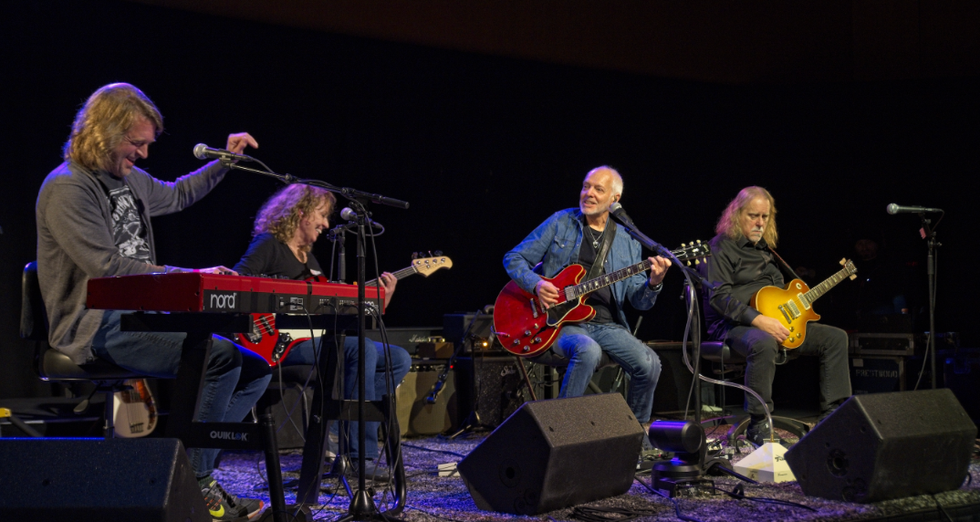
“We were thrilled to welcome Peter Frampton to The Met for an unforgettable visit. Sharing our newly acquired collection of American guitars with him was a true privilege, made all the more special as Frampton recounted his journey as a guitarist and performed some of his most iconic music." - Jayson Kerr Dobney, Frederick P. Rose Curator in Charge of the Department of Musical Instruments at The Met
Frampton’s episode of The Art of Music will air on public television stations nationwide beginning September 6, 2025. Fans may also watch on The Art of Music website or stream on the PBS app.
The national public television World Channel will air the episode Saturday, October 4 at 7pm ET, with a repeat on Monday October 6 at 5am ET (adjust by time zone). Visit worldchannel.org to find your local World Channel station. The program will air on the
All Arts Channel and on the All Arts app in the New York Metro area on Saturday, October 25 at 9 pm.
This special interview and performance featuring Peter Frampton presented by United MileagePlus® Cards from Chase was an unforgettable occasion for Chase United Cardmembers who were invited to attend the intimate live taping. The United MileagePlus® Cards from Chase provide Cardmembers with access to exclusive events and experiences in addition to many reward and travel benefits with United Airlines. Underwriters for The Art of Music are The Mark Hotel and SUNDRAGON.
Additional artists to be announced for the series soon. For more information, visit https://theartofmusic.org.
PRS Guitars Brings Back the Mira as an S2 594
PRS Guitars today announced the return of the Mira model to the Maryland factory line, now with the 24.594” scale length. This new iteration, available in both gloss and satin finishes, will be a regular offering in the S2 Series.
The 22-fret S2 Mira 594 covers a wide range of styles, including rock, blues, garage, and punk. Pairing its all-mahogany construction with PRS 58/15 LT vintage-voiced pickups results in warm, focused midrange. The humbuckers are paired with two mini-toggle switches to individually tap the pickups, delivering both authentic humbucking and chimey single-coil sounds.
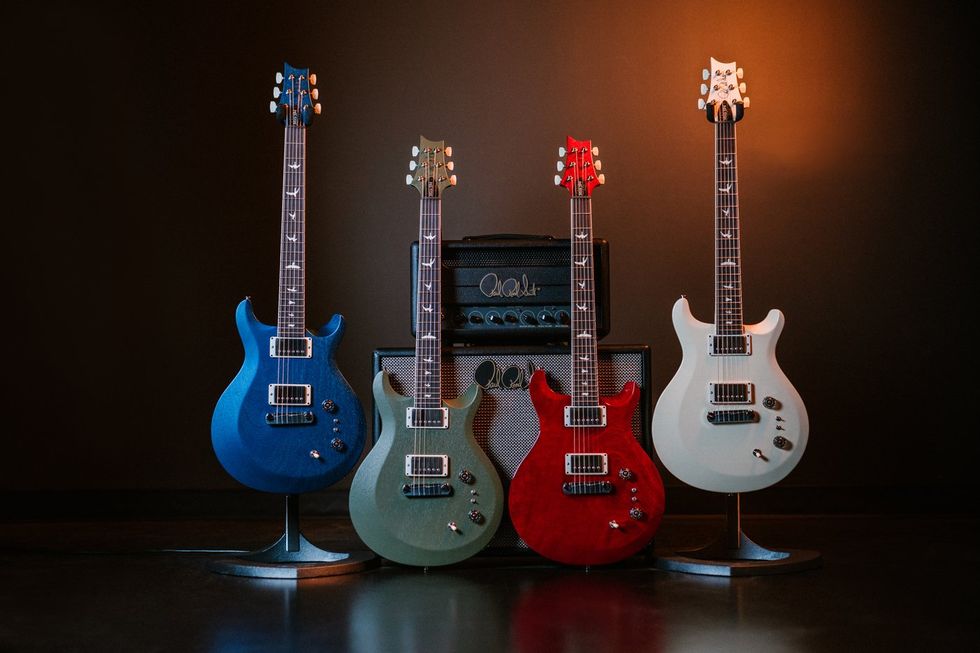
“The Mira has had an interesting history over the course of the last 17 years, but I don’t think it found its true voice until now,” said PRS Guitars Director of Sales, Jim Cullen. “The S2 Mira 594 combines our 24.594” scale length with a Pattern Thin neck shape and a very simple and straight forward feature set that provides an incredibly lively, simple-to-use tool to create music. I hope you are as inspired as we are with the newest evolution of this classic model.”
The S2 Mira 594 is available in: Antique White, Black, Dark Cherry Sunburst, Platinum Metallic, Vintage Cherry, and debut color Black Rainbow Holoflake.
The S2 Mira 594 Satin features the PRS “sinky” satin nitro finish, and is available in: Matcha Green, Mavis Mint Metallic, Metallic Midnight, Dark Cherry Sunburst, Red Apple Metallic, and debut color Cloud Burst.
The Mira was first introduced in 2007 as an all-mahogany pickguard guitar with moon inlays, 24 frets, 25" scale length, a stoptail bridge, and a single mini-toggle. It has appeared across all of the Series and in various configurations, including the popular Mira X. In 2013, the Mira was moved from Core and was one of three models to launch the S2 Series. It was last offered as an S2 in 2018, becoming part of the SE Series from 2020-2023.
PRS Guitars continues its schedule of launching new products each month in 2025. Stay tuned to see new gear and 40th Anniversary limited-edition guitars throughout the year. For all of the latest news, click www.prsguitars.com/40 and follow @prsguitars on Instagram, Tik Tok, Facebook, X, and YouTube.
PRS Guitars Brings Back the Mira as an S2 594
PRS Guitars today announced the return of the Mira model to the Maryland factory line, now with the 24.594” scale length. This new iteration, available in both gloss and satin finishes, will be a regular offering in the S2 Series.
The 22-fret S2 Mira 594 covers a wide range of styles, including rock, blues, garage, and punk. Pairing its all-mahogany construction with PRS 58/15 LT vintage-voiced pickups results in warm, focused midrange. The humbuckers are paired with two mini-toggle switches to individually tap the pickups, delivering both authentic humbucking and chimey single-coil sounds.

“The Mira has had an interesting history over the course of the last 17 years, but I don’t think it found its true voice until now,” said PRS Guitars Director of Sales, Jim Cullen. “The S2 Mira 594 combines our 24.594” scale length with a Pattern Thin neck shape and a very simple and straight forward feature set that provides an incredibly lively, simple-to-use tool to create music. I hope you are as inspired as we are with the newest evolution of this classic model.”
The S2 Mira 594 is available in: Antique White, Black, Dark Cherry Sunburst, Platinum Metallic, Vintage Cherry, and debut color Black Rainbow Holoflake.
The S2 Mira 594 Satin features the PRS “sinky” satin nitro finish, and is available in: Matcha Green, Mavis Mint Metallic, Metallic Midnight, Dark Cherry Sunburst, Red Apple Metallic, and debut color Cloud Burst.
The Mira was first introduced in 2007 as an all-mahogany pickguard guitar with moon inlays, 24 frets, 25" scale length, a stoptail bridge, and a single mini-toggle. It has appeared across all of the Series and in various configurations, including the popular Mira X. In 2013, the Mira was moved from Core and was one of three models to launch the S2 Series. It was last offered as an S2 in 2018, becoming part of the SE Series from 2020-2023.
PRS Guitars continues its schedule of launching new products each month in 2025. Stay tuned to see new gear and 40th Anniversary limited-edition guitars throughout the year. For all of the latest news, click www.prsguitars.com/40 and follow @prsguitars on Instagram, Tik Tok, Facebook, X, and YouTube.
Question of the Month: The Pedals of Our Dreams
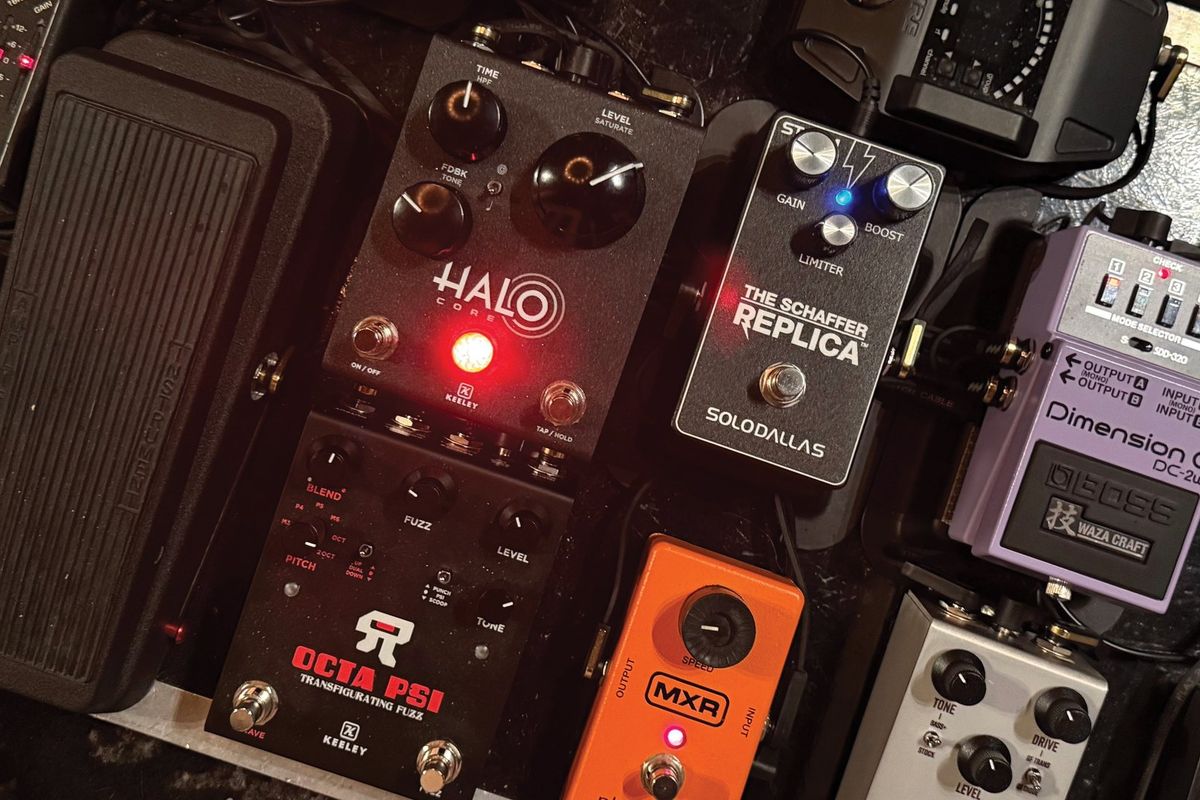
Question: What pedal doesn't exist now that you hope gets built in the next year?
Guest Picker - Penelope StevensMotherhood, Penny & the Pits
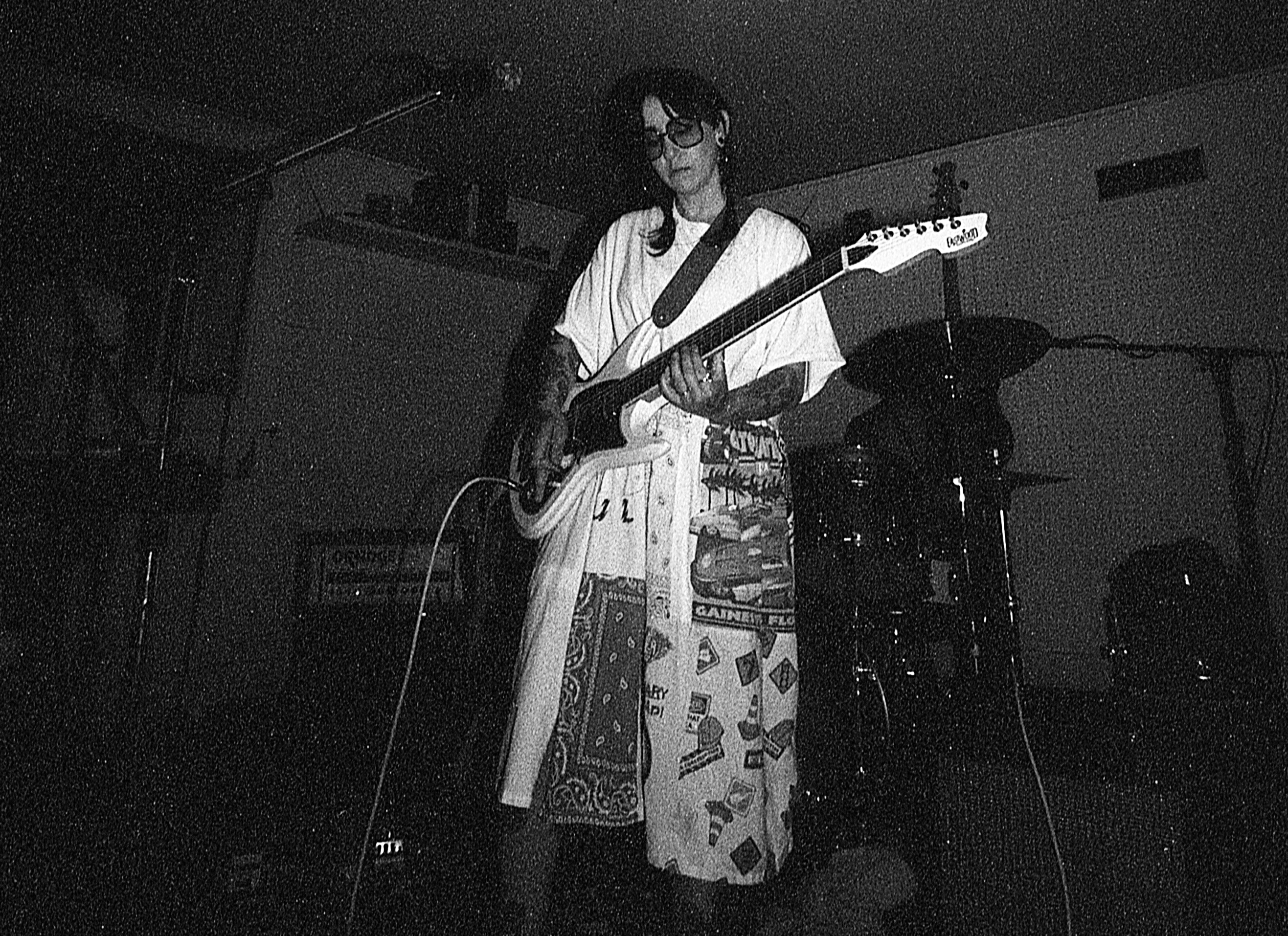
A: I’m a synth player before a guitarist, and for years I’ve been trying to figure out a way to play my synths through my guitar … or my guitar through my synths? I know there are pedals that can make your guitar sound like a synth, even some that can emulate particular models, but I want a pedal that I can connect to any synth, and it can feed whatever patch I’ve built through my chain. I have a Volca Keys that makes absolutely GNARLY tones, and for a while I was trying to figure out a way to have it in my pedalboard as an effect. Alas, this is quite beyond my skillset—I’m no electrical engineer—but the dream has never died. Imagine being able to shape your guitar tone with as many possibilities as on an analog synth! Can somebody make me this pedal please?
Obsession: When I’m not touring, I’m a cocktail bartender. (PLEASE don’t call me a mixologist.) My current obsession is this margarita riff I’ve been working on: tequila blanco, amaretto, lime, and prickly pear shrub. I’m drinking this little number more than I should probably admit, especially as we fight a heat wave in eastern Canada. I’ve been making cocktails to go along with each song on my new album, and filming tutorials for each one on Instagram. The prickly pear margarita will be making an appearance soon!
Reader of the Month - Jin J. X
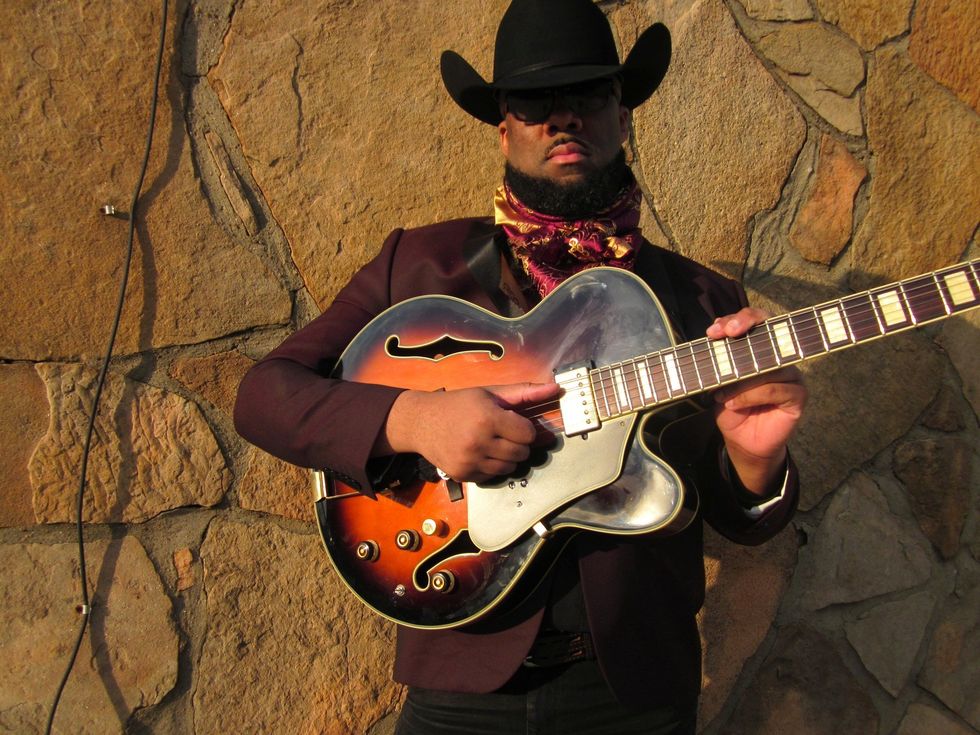
A: The out-of-production Boss VB-2. I absolutely love chorus and vibrato. I also love Boss. While I appreciate the CE-2w and absolutely love the upgrade/update, I just haven’t been able to connect with its counterpart, the VB-2w. I’ve tried multiple times to buy that pedal but to no avail. The Behringer UV-300 is analog and sounds absolutely perfect, though I’ve found that every single one I’ve bought over the years has a switch failure, and many modders can’t really work with them. Also, there are other great vibrato pedals, though without the “rise” function of the VB-2, I don’t find them as useful. I’ve heard the BYOC folks make one, though they seem to sell very quickly. I hope Boss, or someone, makes a true-blue VB-2-style pedal, with the right analog chip, that is built with solid components.
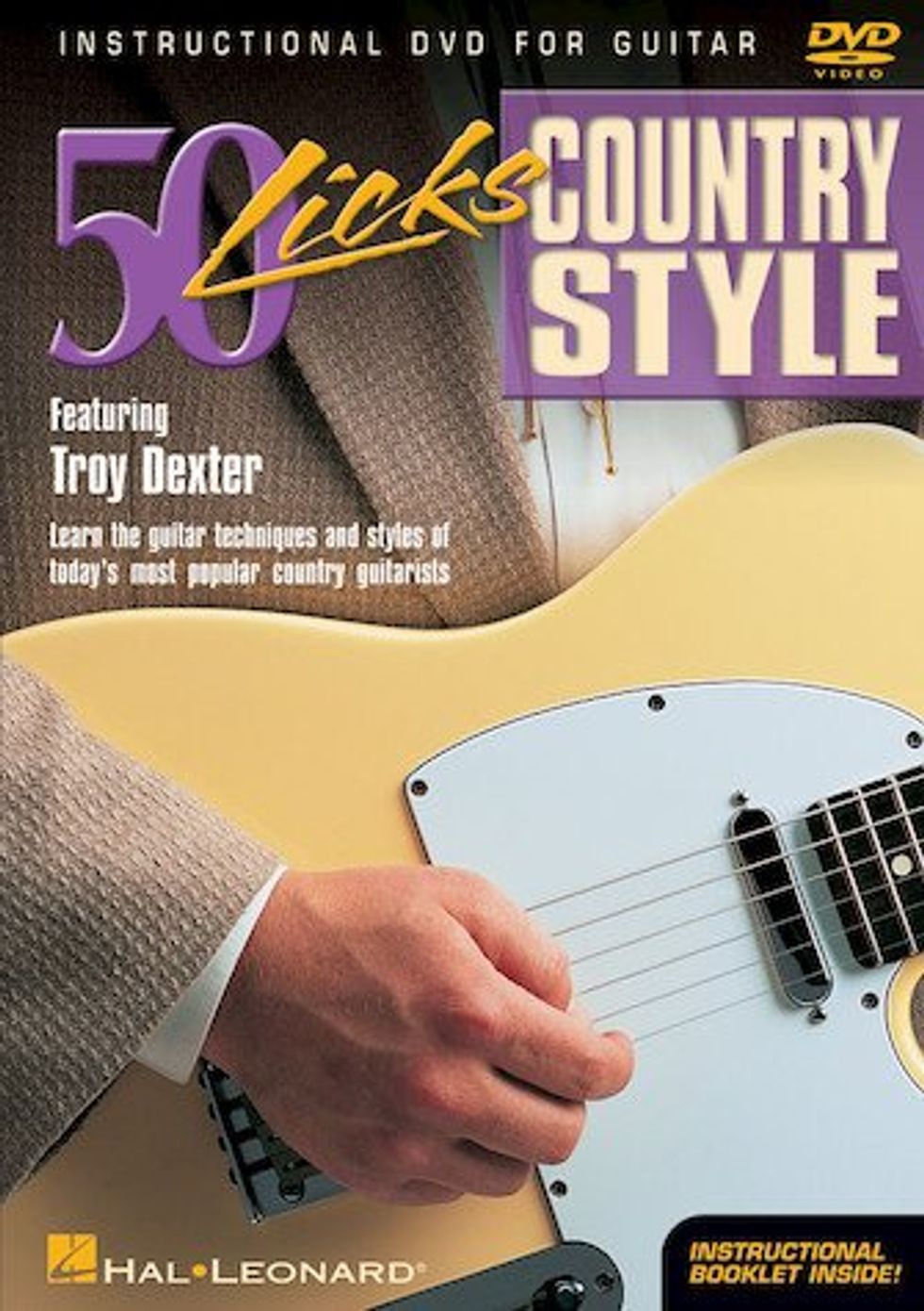
Obsession: Country-style guitar. Fifteen years ago, I bought a DVD called 50 Licks Country Style featuring Troy Dexter. After all these years, I finally pulled it out of the plastic and have begun trying to work those up. In many ways, the licks revolve around dominant 7 chords, so, in some ways, these country licks sound like jazz licks in the bridge position. It’s like a two-for-one special learning them. I also recently released an Afro-futurist/country album earlier this year called The Barefoot, Pregnant, Neck Beard, Marital Bed String Band, so I’ve been playing and promoting that record and putting my country licks to good use.
Brett Petrusek - Director of Advertising
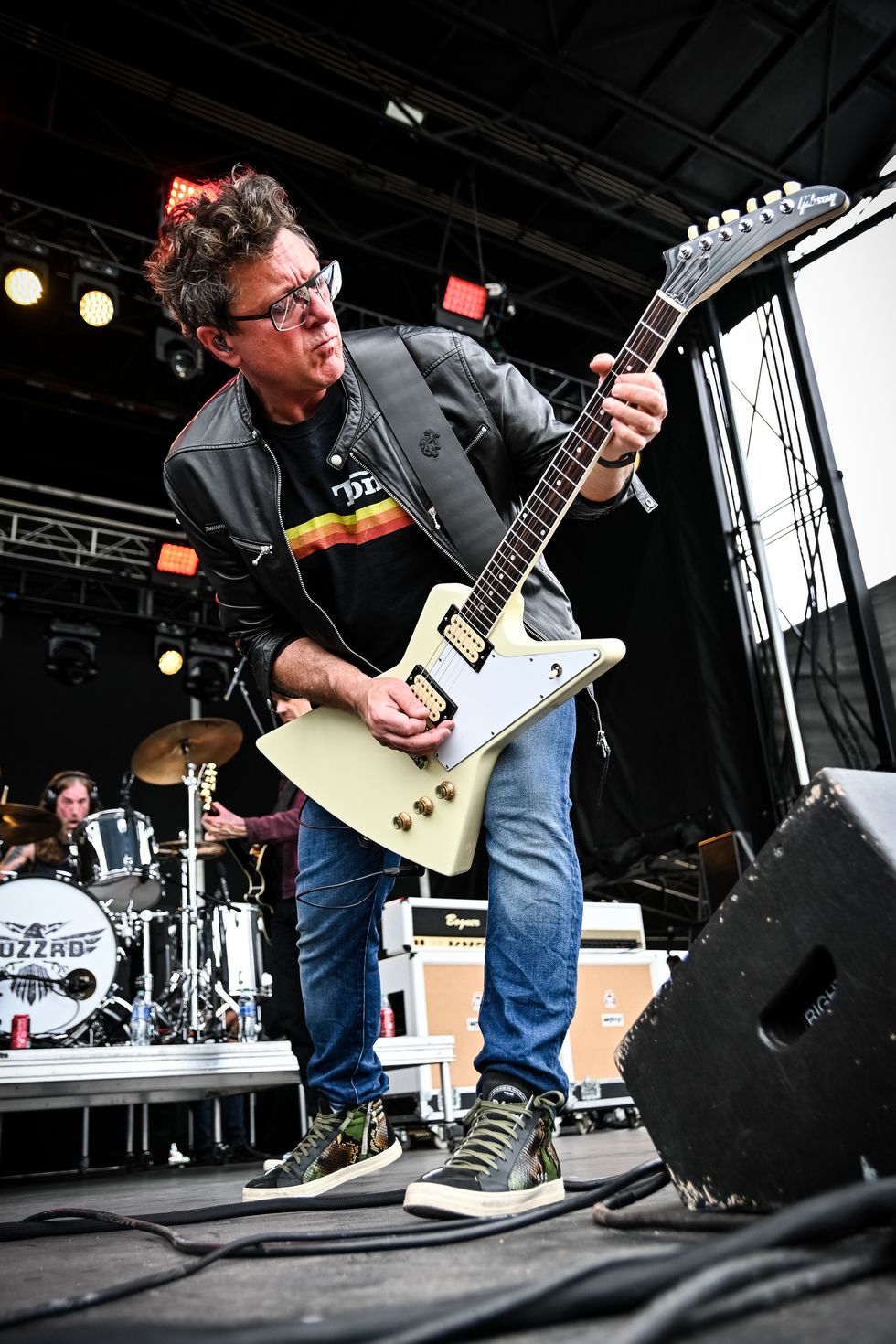
A: I’d love a Boss Waza Craft Dimension C with a mix control knob, or better yet a Waza Craft reissue of the Digital Dimension with expanded tonal range, better filtering, fancy high-quality buffer, and with that ultra-low noise floor.
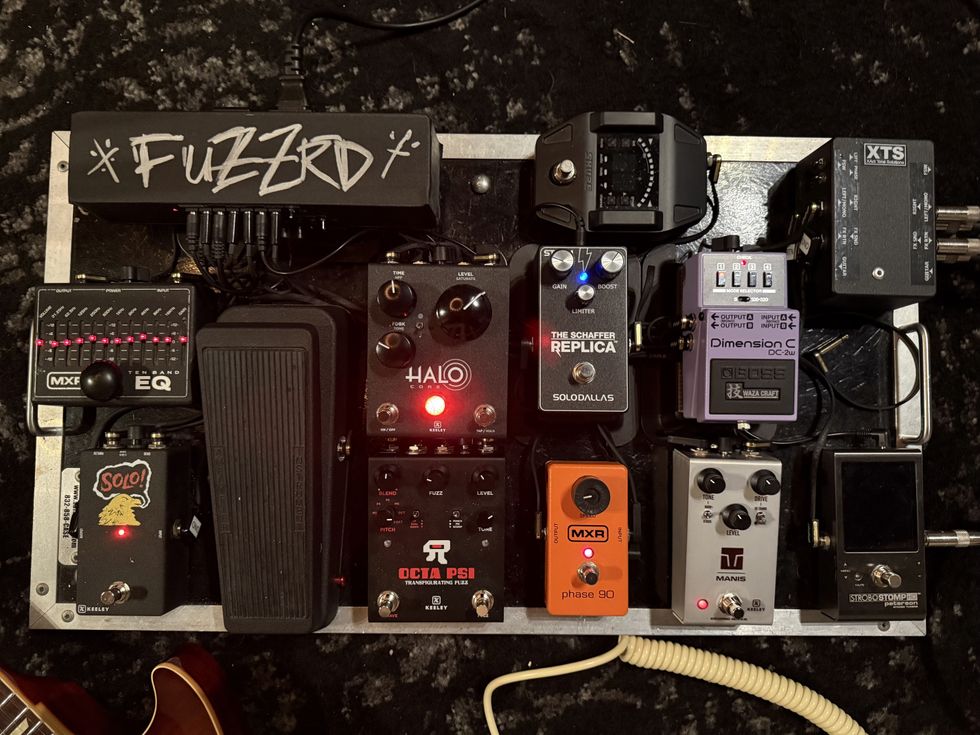
Obsession: Auditioning stereo modulation pedals. I use pedals like this in my live rig to split out in front of two big amps to expand the stereo field. I like the option of being able to keep it subtle and having easy access right on my pedalboard (old-school). It’s an art form to find modulation or doubler pedals that will do this into the front end of high-gain amps without a lot of hiss. I am currently digging the Mr. Black DoubleTracker Stereo; it can get insanely wide (especially in the effects loop). Maybe Keeley will make a stereo 30 ms in their new folded aluminum enclosures … I bet their fanbase would go nuts!
Nick Millevoi - Senior Editor
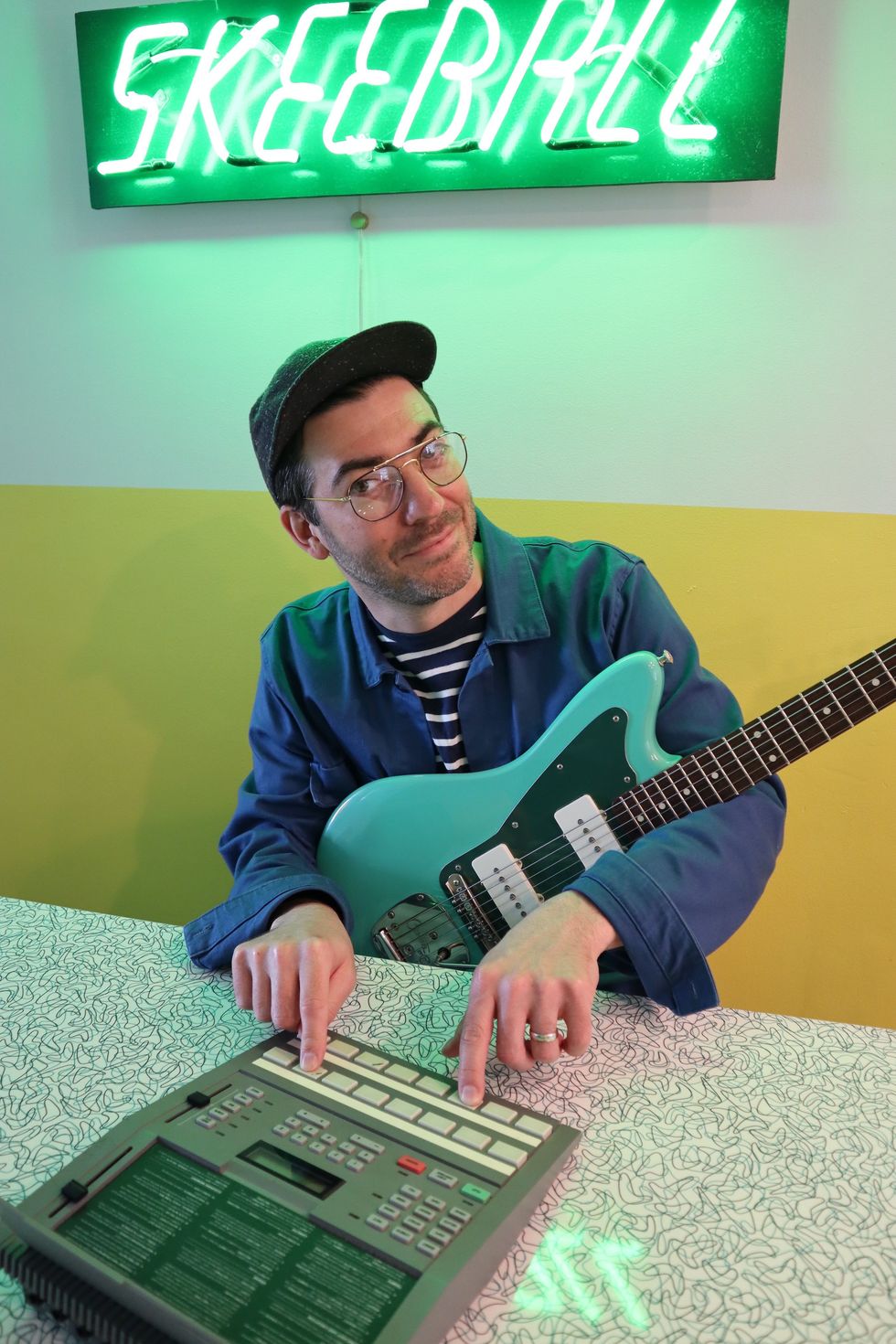
A: I’ve spent years longing for a pedal that captures the unique sonic capabilities of the Lexicon Prime Time. The Soundtoys PrimalTap plugin does an excellent job for working at home, but I dream of making those warm, ethereal sounds live (and the pricey rack unit itself isn’t practical for most of us). The Prime Time’s double delay lines with lo-fi-enhancing multiply knob sounds truly unique among delay units (dig it, Daniel Lanois enthusiasts), and its hip primary color knobs demand pedalboard real estate!
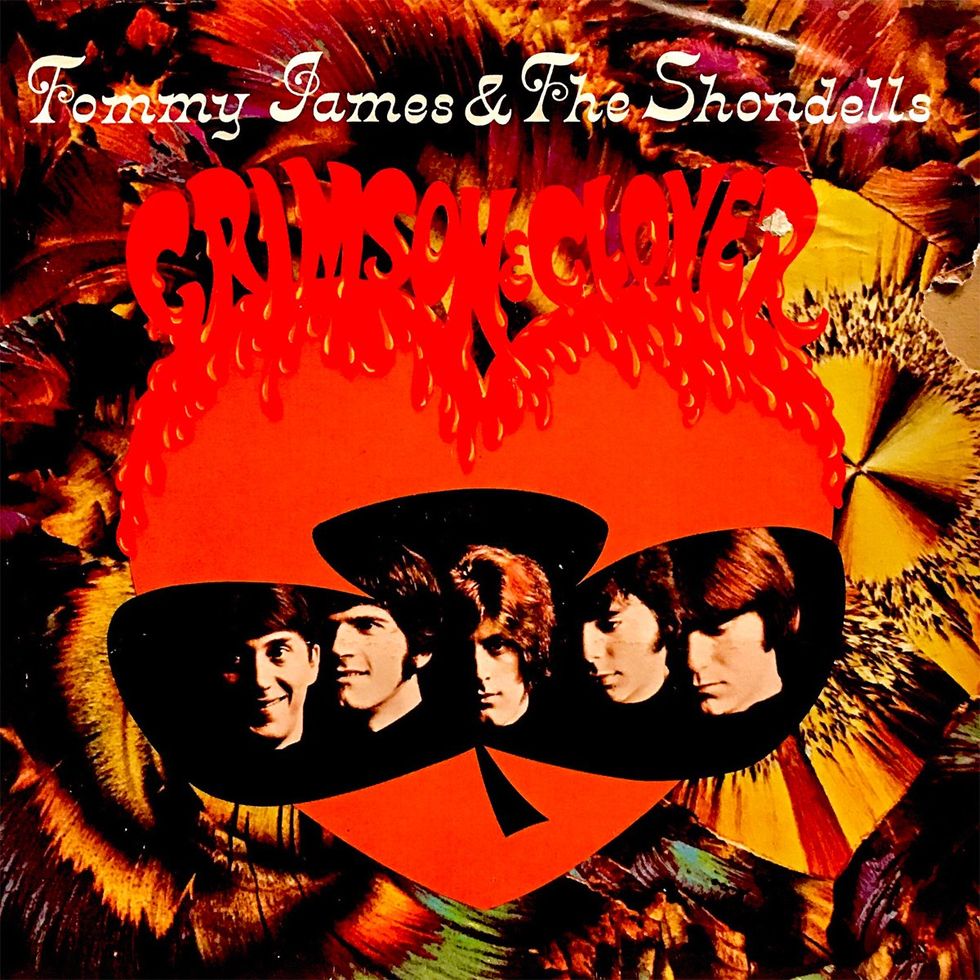
Obsession: I just caught Tommy James & the Shondells live and was blown away. Over the course of a relentlessly hit-laden set list—seriously, it was one after another: “Crystal Blue Persuasion,” “Mony Mony,” “Crimson and Clover,” “I Think We’re Alone Now,” “Draggin’ the Line,” and on and on—Tommy’s voice was in the finest form, driven by a powerful, heavy-grooving band. Go see ’em if you can!
T-Rex Effects Twin Blaze Giveaway from Guitars.net!

T-Rex Twin Blaze Giveaway from Guitars.net
T-Rex Twin Blaze
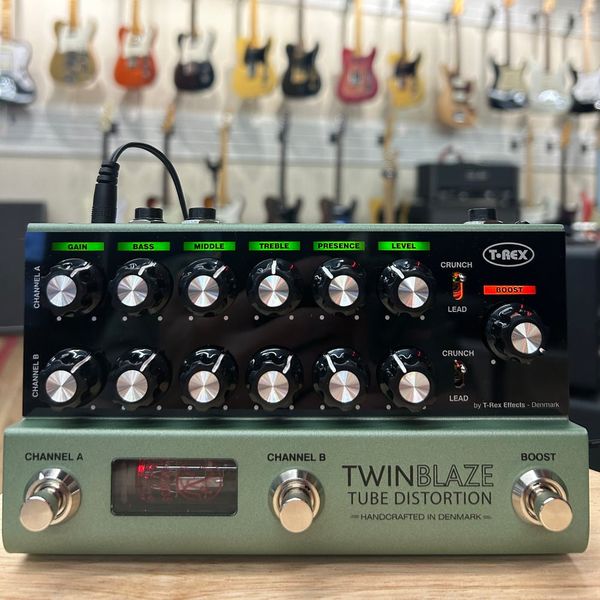
- Handcrafted in Denmark
- An identical two channel, tube driven Overdrive Distortion (12AX7A) spiced with the legendary T-Rex Tone and multiple functions.
- The extended tone control allows you to go from clear British sound to deep-end distortion, obtaining a variety of sound settings.
- Crunch and Lead setting for each channel, which goes from gentle, crispy blues to over the top lead sound.
- The emulated Speaker Simulation output is directed to the studio setup or other external effectS.
- A 20dB Clean Boost works individually to dial in the perfect solo level without changing the tone and gain structure.
- 12V power supply included.
.rbm-pick-card { --rbm-border: ; --rbm-accent: ; border: 2px solid var(--rbm-border, #e53e3e); border-radius: 10px; padding: 16px; background: #fff; font-family: inherit; position: relative; } .rbm-pick-badge { position: absolute; top: -10px; left: 12px; background: var(--rbm-accent, #e53e3e); color: #fff; font-size: 12px; line-height: 1; padding: 6px 10px; border-radius: 6px; font-weight: 700; } .rbm-pick-wrap { display: grid; grid-template-columns: 110px 1fr; gap: 16px; align-items: start; } .rbm-pick-img { aspect-ratio: 1 / 1; /* forces square crop */ overflow: hidden; border-radius: 6px; background: #f3f4f6; /* subtle placeholder */ } .rbm-pick-img img { width: 100%; height: 100%; object-fit: cover; /* crops without distortion */ display: block; } .rbm-pick-title { margin: 0 0 4px; font-size: 20px; font-weight: 800; color: #111; } .rbm-pick-sub { margin: 0 0 12px; font-size: 14px; font-weight: 700; color: #334155; } .rbm-pick-btns { display: grid; gap: 10px; max-width: 560px; } .rbm-pick-btns a { display: block; text-align: center; background: #000; color: #fff !important; text-decoration: none; padding: 12px 14px; border-radius: 8px; font-weight: 800; letter-spacing: .3px; } .rbm-pick-btns a span.price { text-transform: none; } .rbm-pick-btns a span.label { text-transform: uppercase; } /* Responsive */ @media (max-width: 560px) { .rbm-pick-wrap { grid-template-columns: 80px 1fr; } .rbm-pick-title { font-size: 18px; } }
T-Rex Twin Blaze
“I play two hours a day. Three is too much, isn’t it?”: Spinal Tap’s Nigel Tufnel on the secret of guitar practice

Back in 1984, Spinal Tap’s Nigel Tufnel shattered the limits of rock and roll with an amp that cranked all the way up to 11. Now, over 40 years later, he’s back for Spinal Tap II: The End Continues. The (mock) documentary sees the group reuniting after 15 years – and Tufnel’s got some advice for guitarists everywhere.
Speaking to Guitar World, the now 77-year-old fictional rocker insists that the secret to keeping your chops in order is consistency. “I play two hours a day,” he says. “Three is too much, isn’t it? I like to take a walk in the morning with Moira [his partner]. I come back, have a little breakfast, and then I sit down and play. It’s not exactly two hours, but it’s normally two hours. Then I go to the cheese shop.”
- READ MORE: Eddie and Alex Van Halen thought This Is Spinal Tap “wasn’t funny” because it was too true to life
While the legendary Tufnel now runs a cheese ship, he insists he still plays his instrument “every day” and he’s still “learning” new tricks, too. “I play differently than I once played, and I’m learning,” he explains. “I used to play a lot of fast solo things, but now I’m listening in a different way to a spacious way of playing, which is more long notes.”
It’s quite a reserved approach to the instrument, considering some of Tufnel’s peers. In a recent chat with The Smashing Pumpkin’s Billy Corgan, Steve Vai recently admitted that he’d play for 9 hours every day if he could. “It becomes sort of like an addiction,” he said. “My schedule back [when I was young]… I was happy if I got nine hours a day. I was very neurotic, very myopic.”
“It just had such a pull, such an attraction, such an interest. Such a joy,” he continued. “The funny thing was, it didn’t feel like discipline… It was a passion. Passion is a much more powerful engine of creation than discipline.”
Two hours works just fine for Tufnel, however. And he’s still advancing as a guitarist, learning to work with new effects and advancements in technology to aid his approach to guitar. “There are lots of pedals that people have done in the last years that are quite extraordinary,” he reflects. “I do a little work on them… I take them apart, and I do a little fooling around with wires and stuff like that to get the sound I’d like.”
“Lots of times I break them because I don’t really know how to do that work,” he admits. “I haven’t been trained, but it’s interesting to open things up, see all the wires and move them about a bit.”
One of the most significant shifts over the last 41 years comes in the form of Tufnel’s new infinity Marshall amp. “Marshall has made for me an amplifier, the head, and if you look at the dials, it now goes to Infinity. Just think about that for a moment. Think about infinity – oh, my God, that’s literally infinity,” Tufnel says.
“Lots of times I break them because I don’t really know how to do that work. I haven’t been trained, but it’s interesting to open things up, see all the wires and move them about a bit.”
The new Spinal Tap II: The End Continues follows the group’s reunion for one final blow-out gig – and it even featured the likes of Elton John, the legend singing on a live rendition of 2009’s Stonehenge.
The decision to document the final show came after a “long discussion” with the band and director Marty DiBergi. “Marty made a case that it made sense for us to do this new thing, which is us coming together again for a reunion,” Tufnel explains. “I haven’t seen the lads for 15 years… and besides that, we had a legal obligation to do one more show.”
Spinal Tap II: The End Continues lands on 12 September.
The post “I play two hours a day. Three is too much, isn’t it?”: Spinal Tap’s Nigel Tufnel on the secret of guitar practice appeared first on Guitar.com | All Things Guitar.

